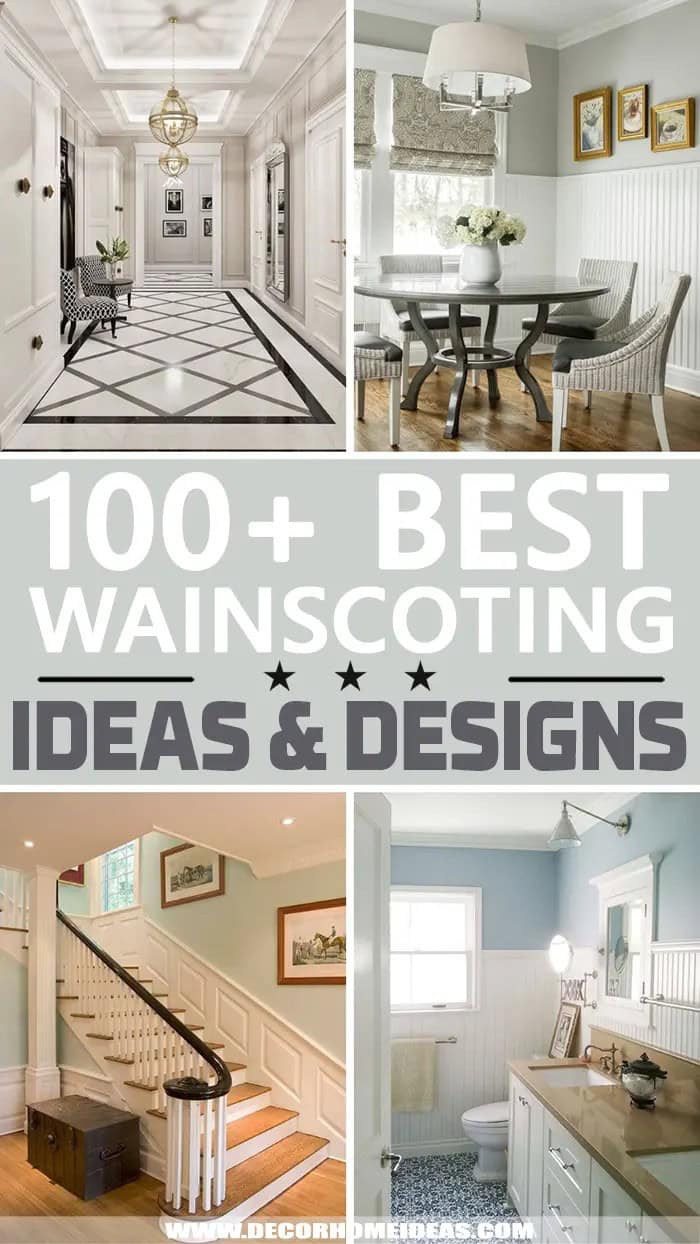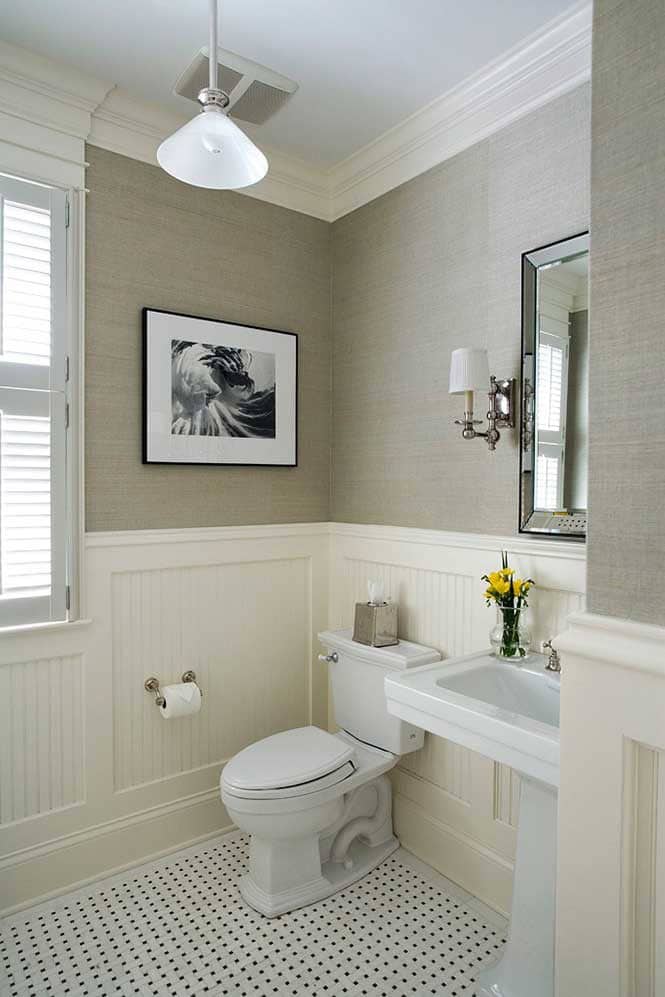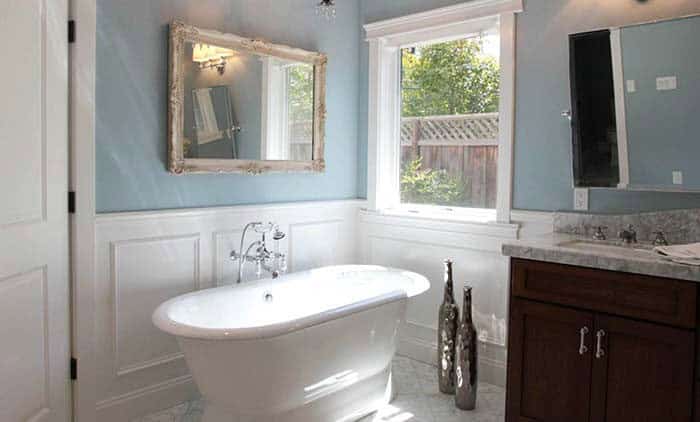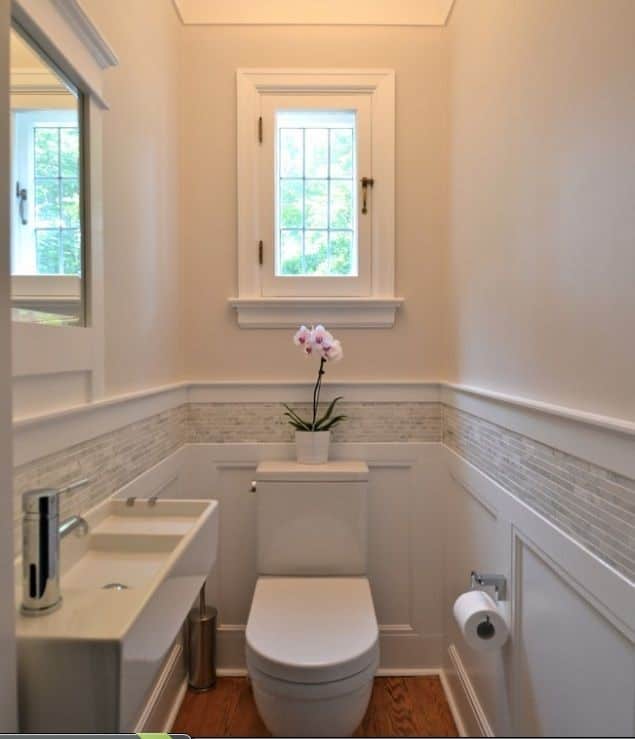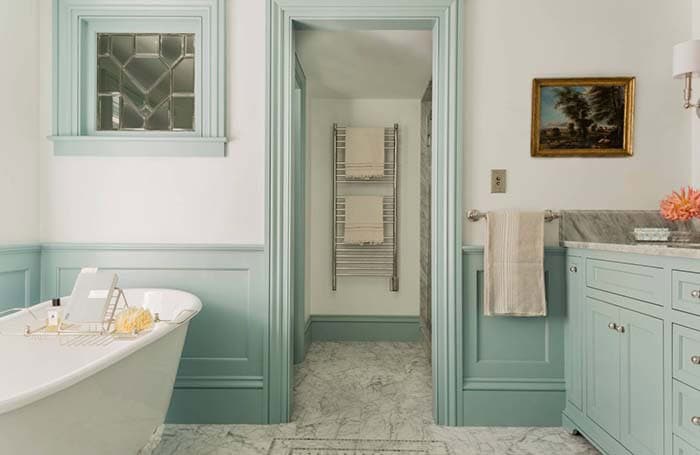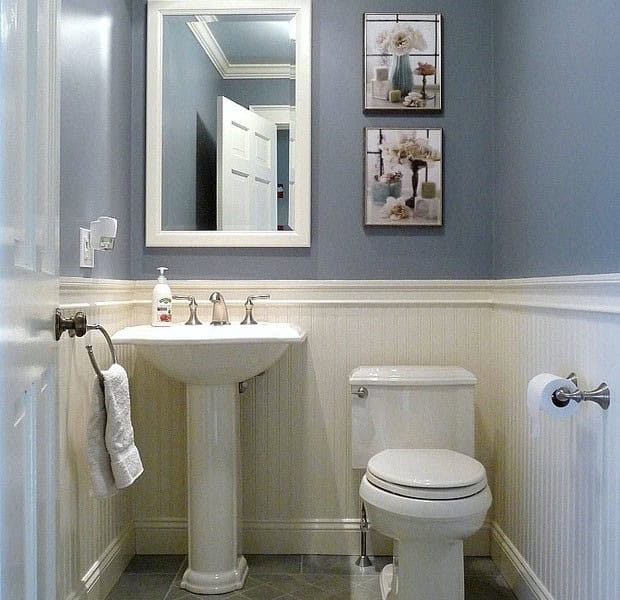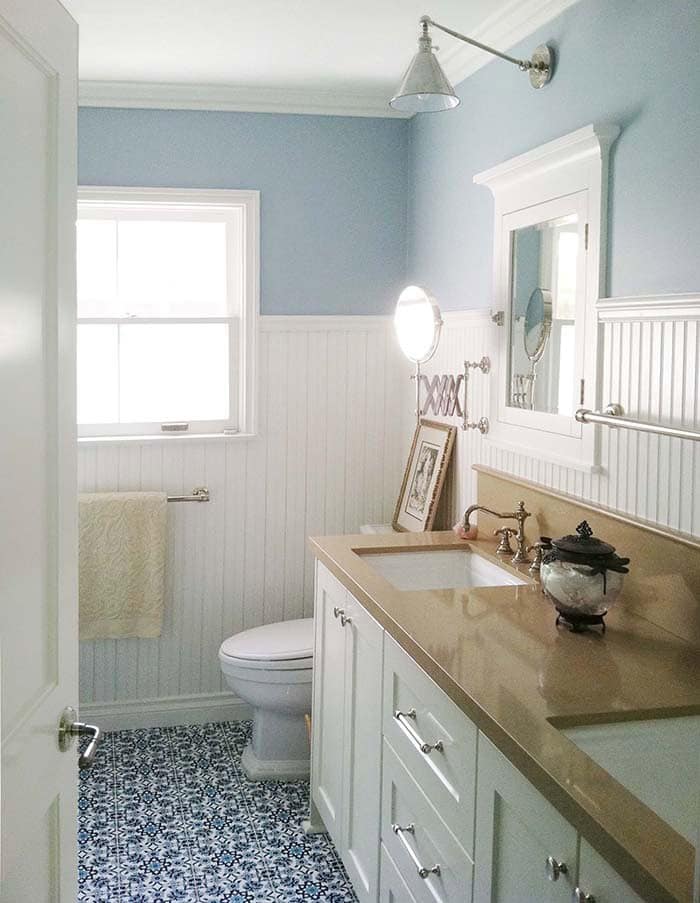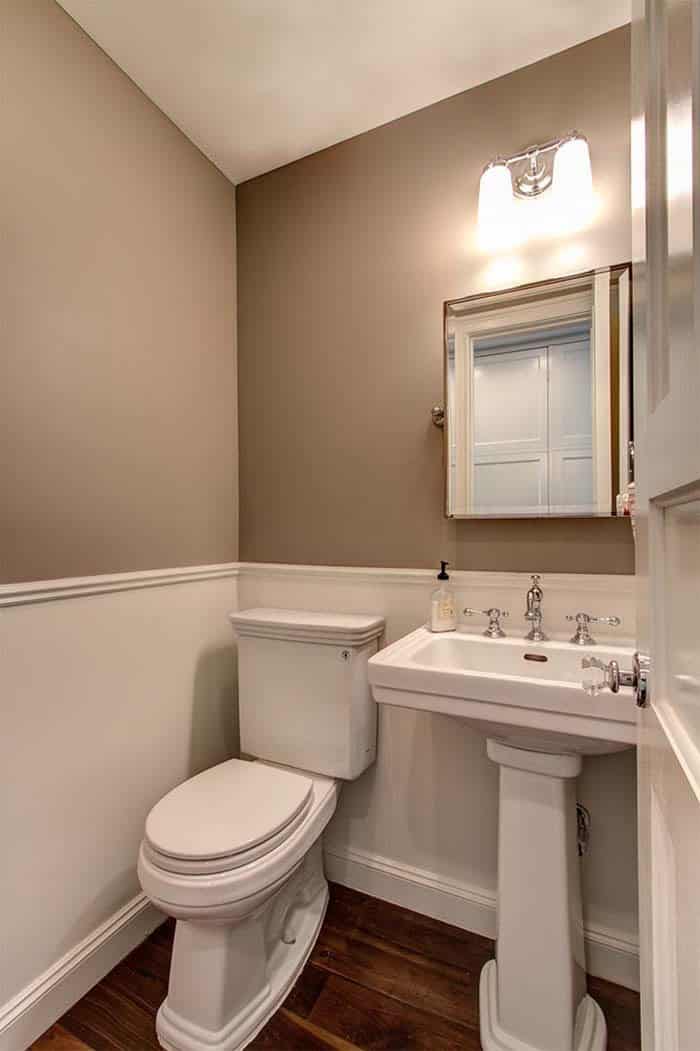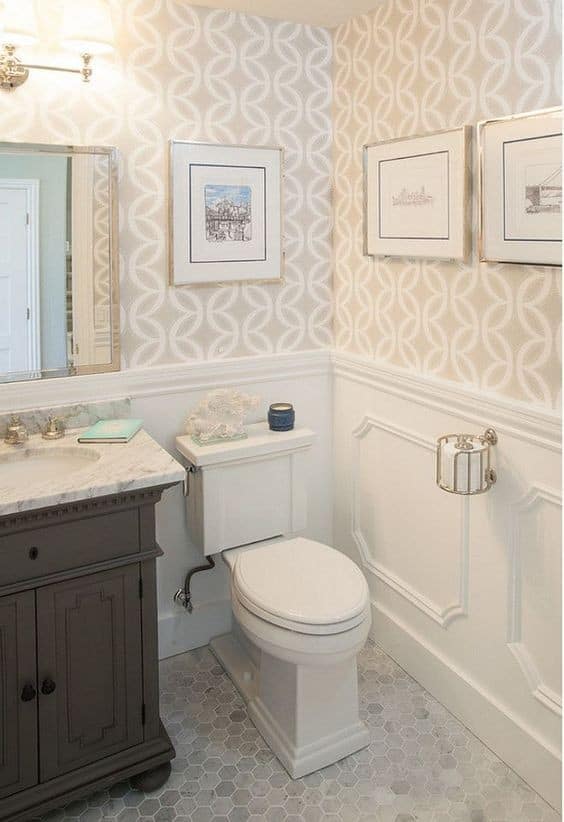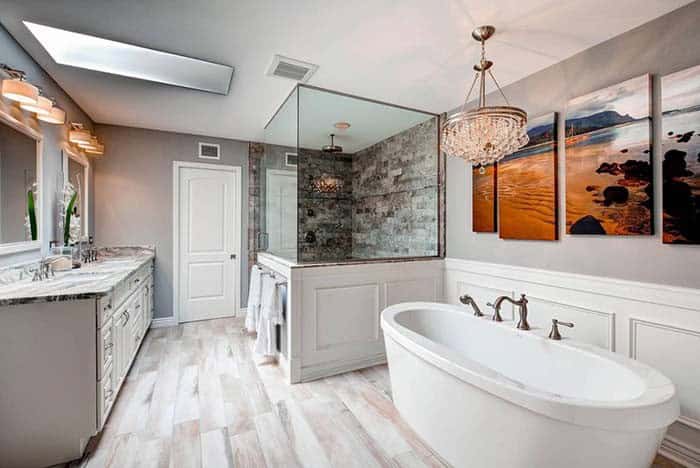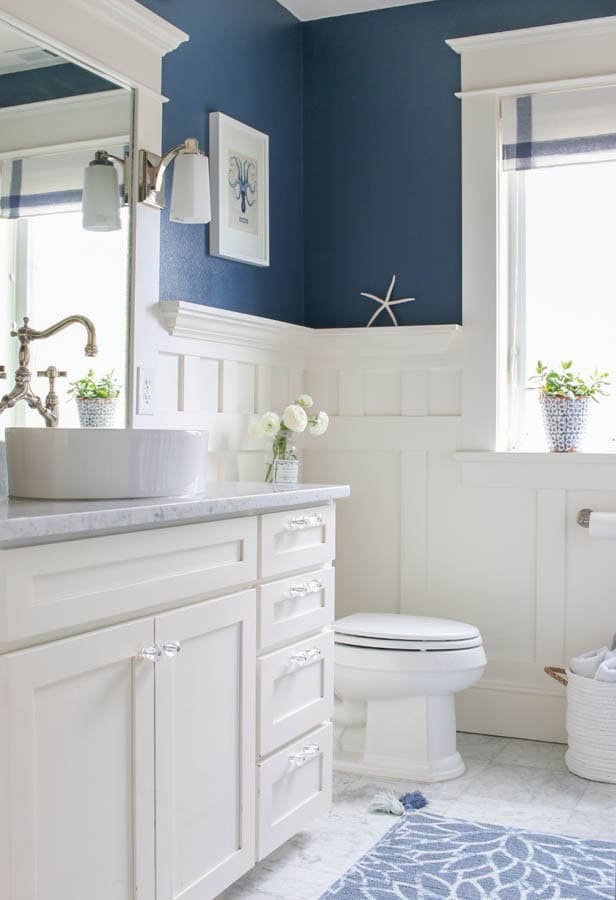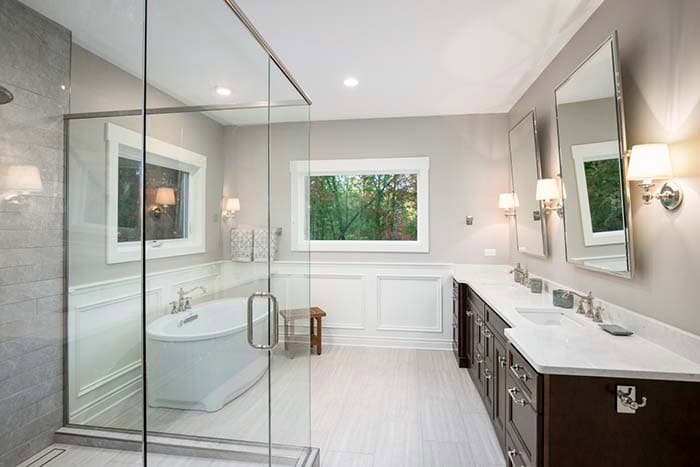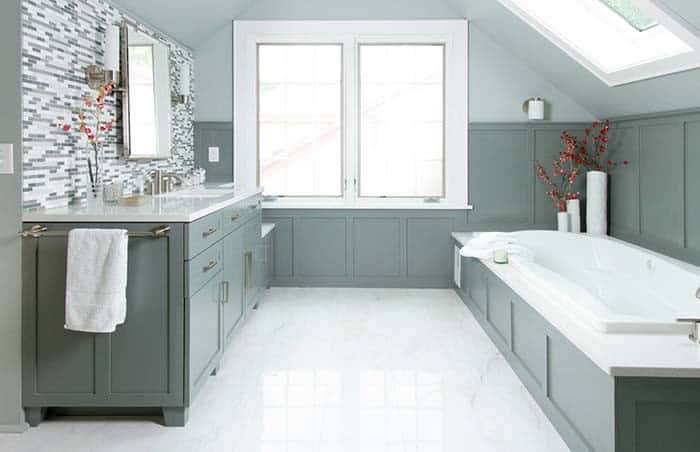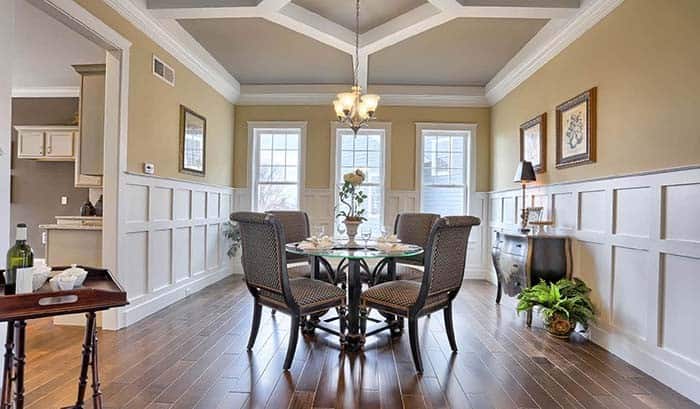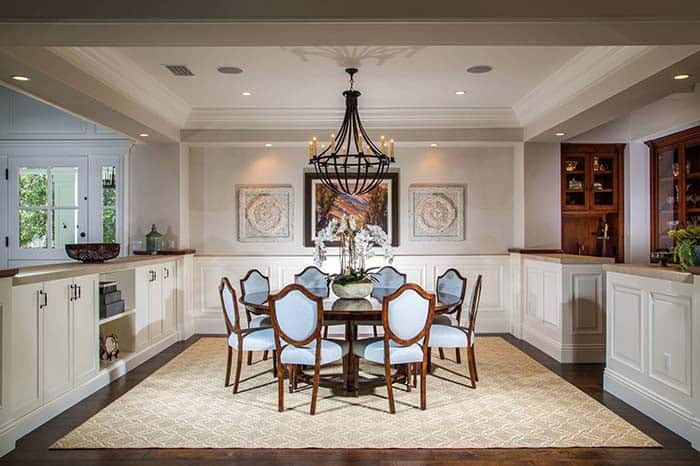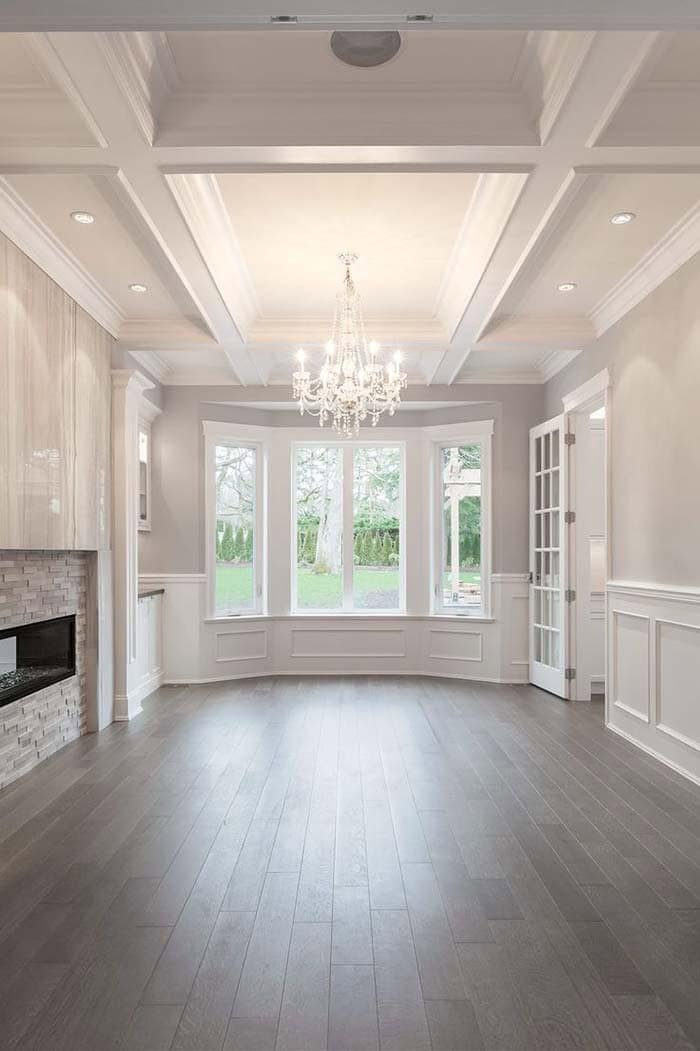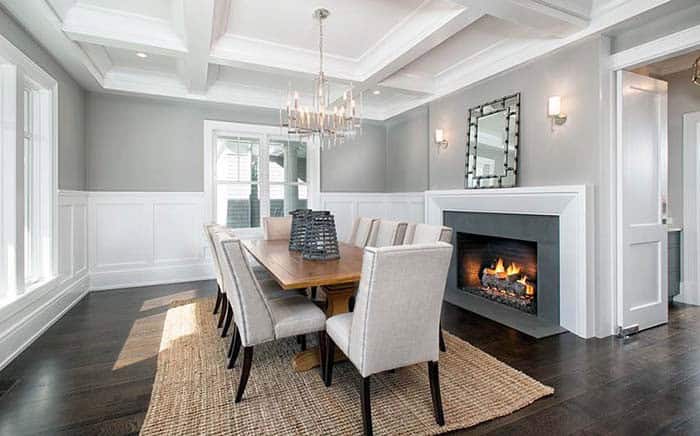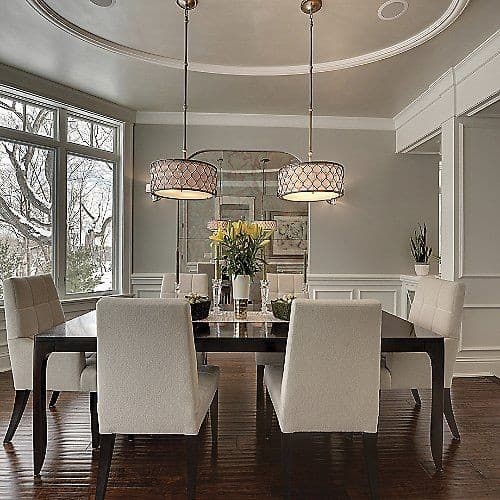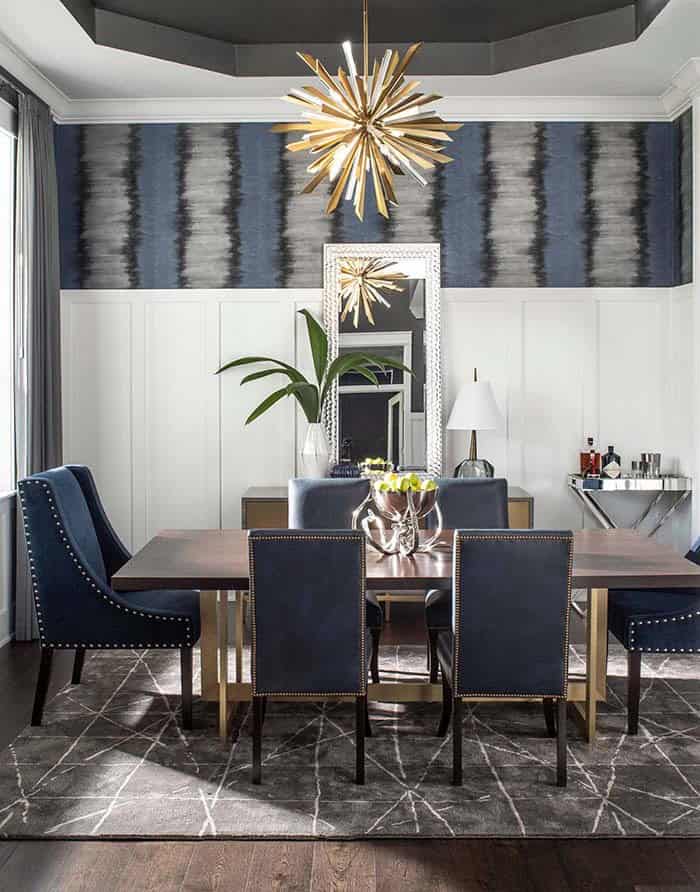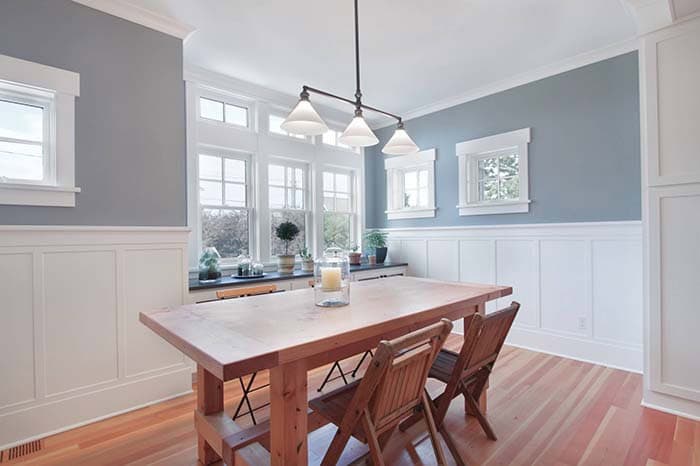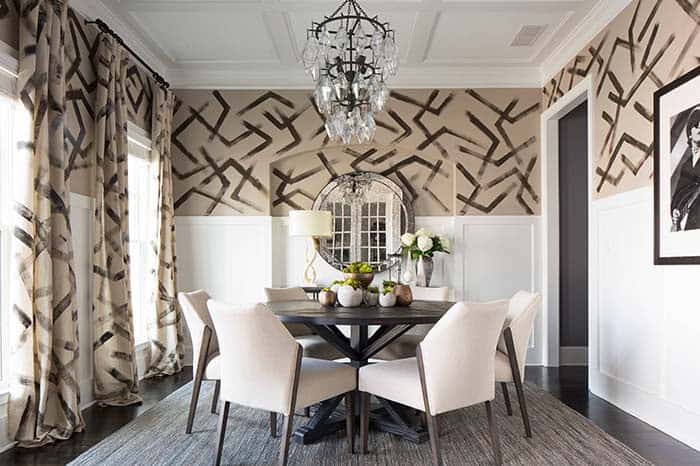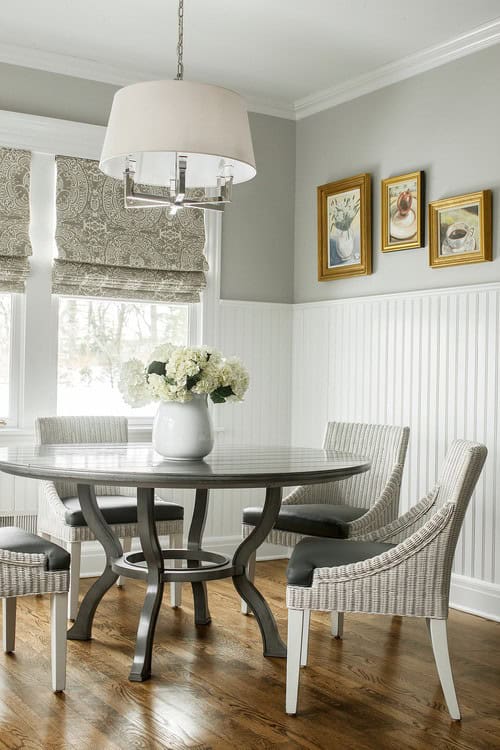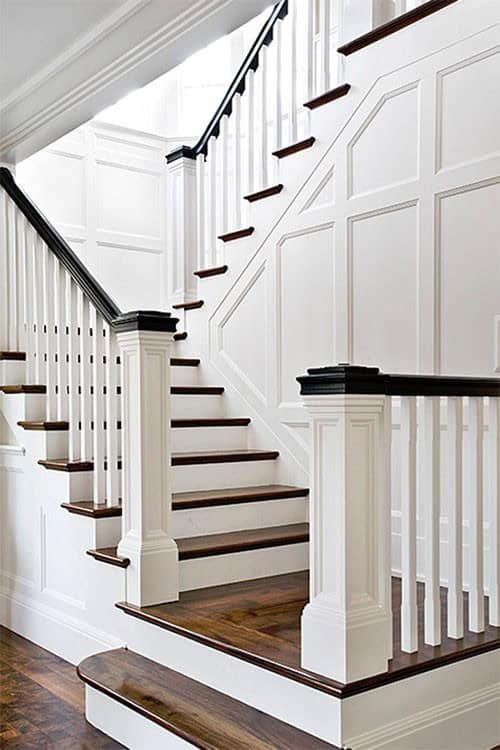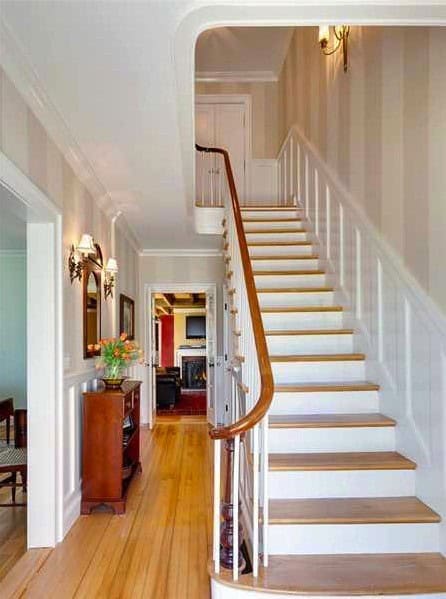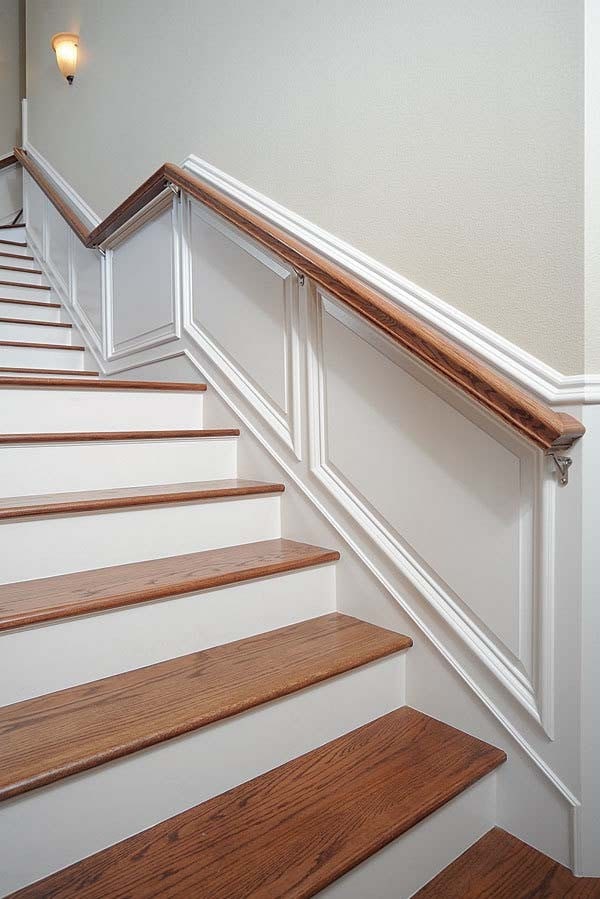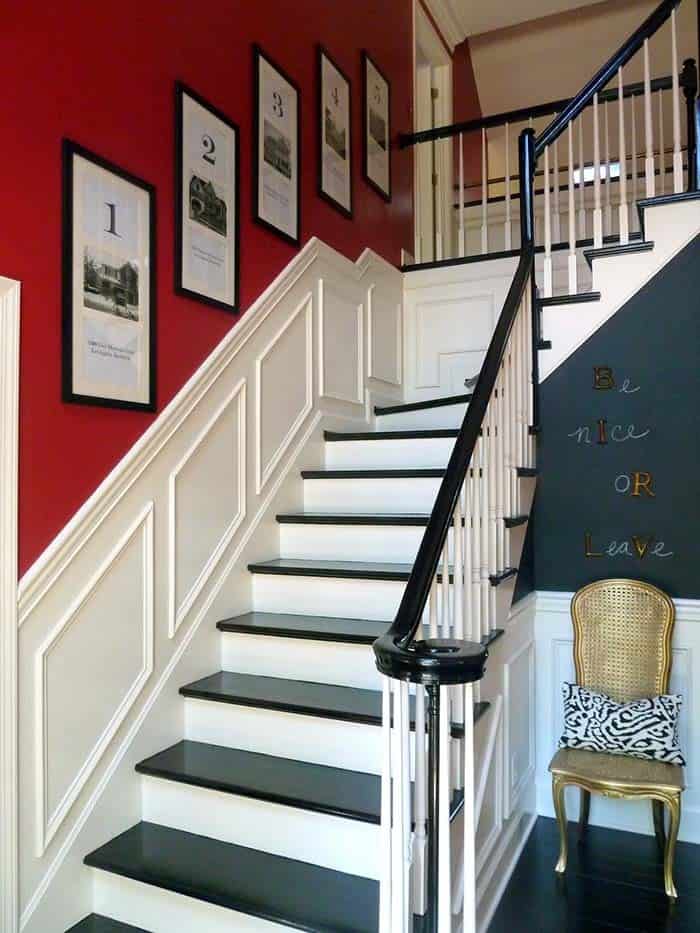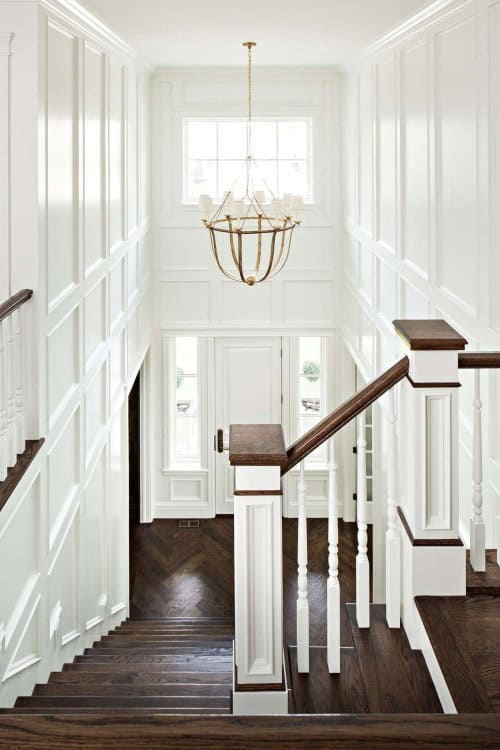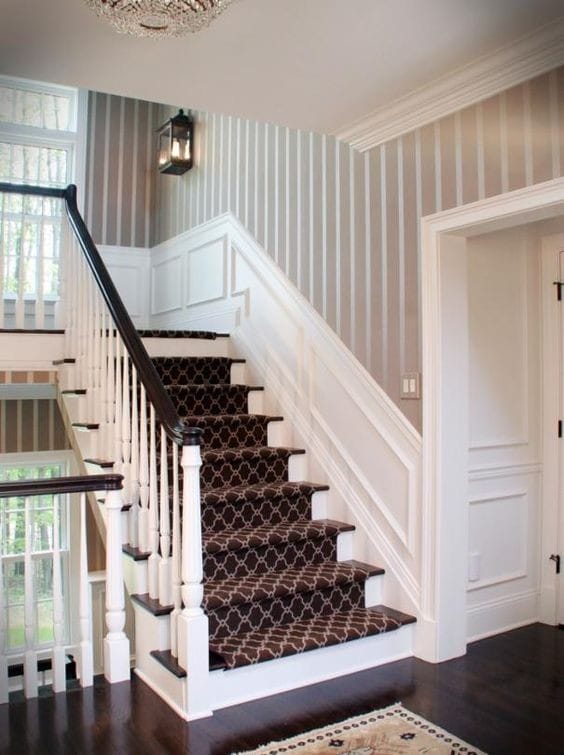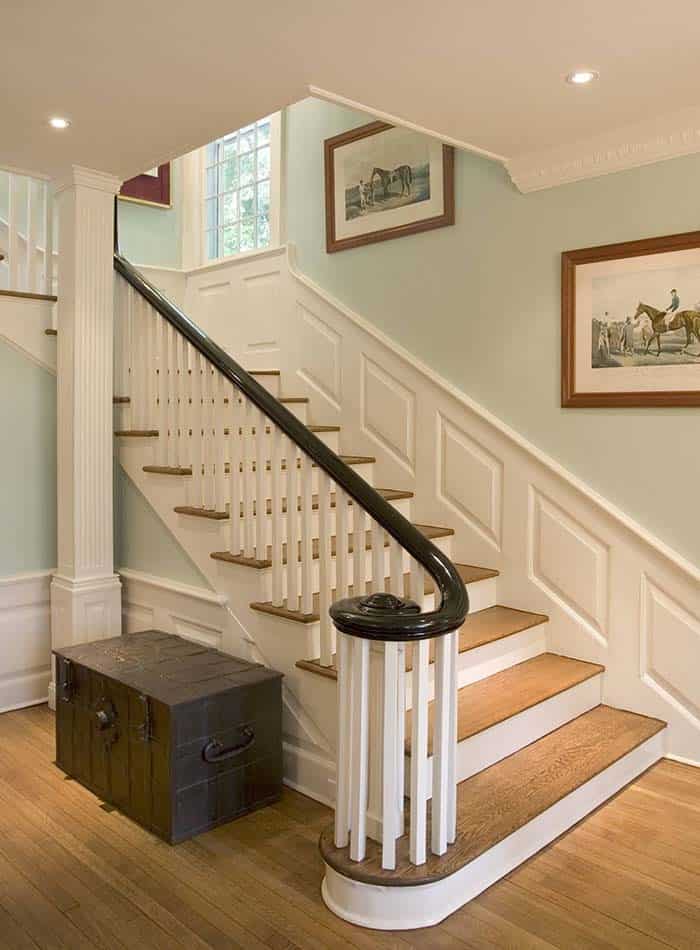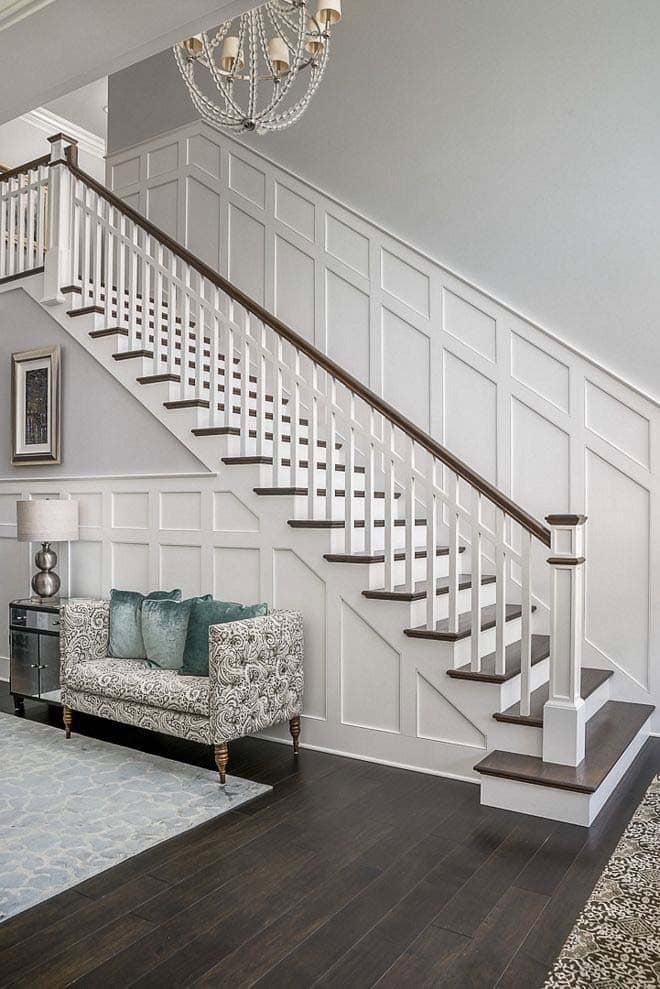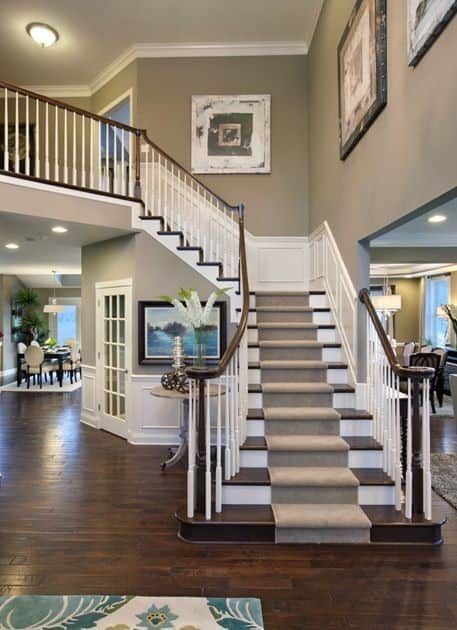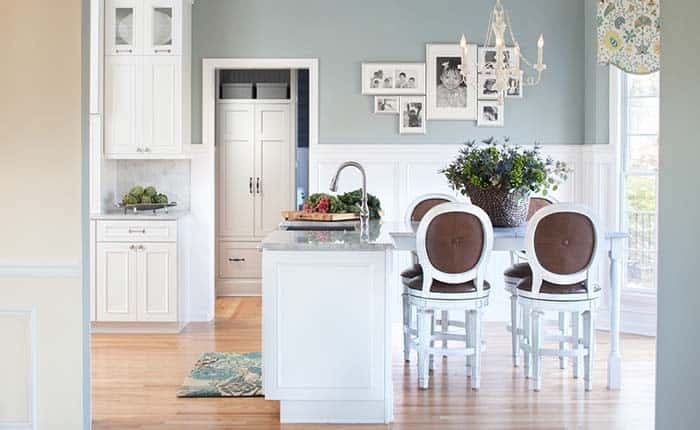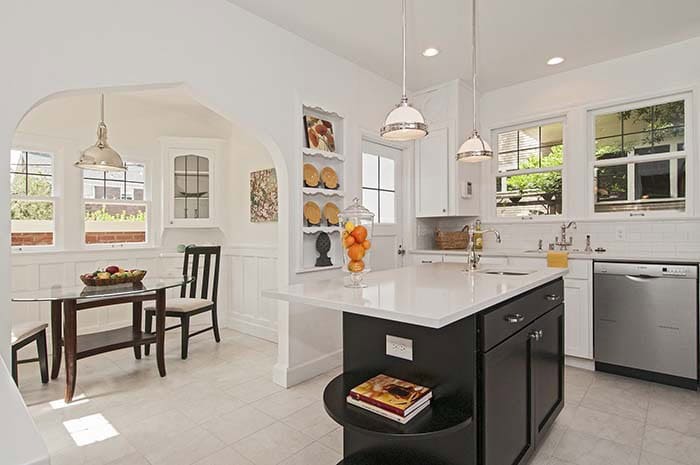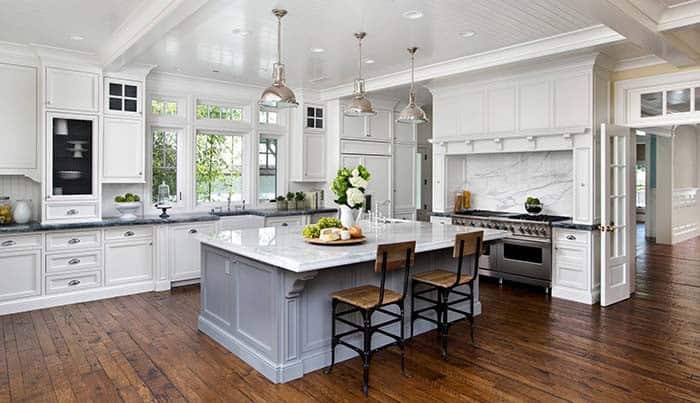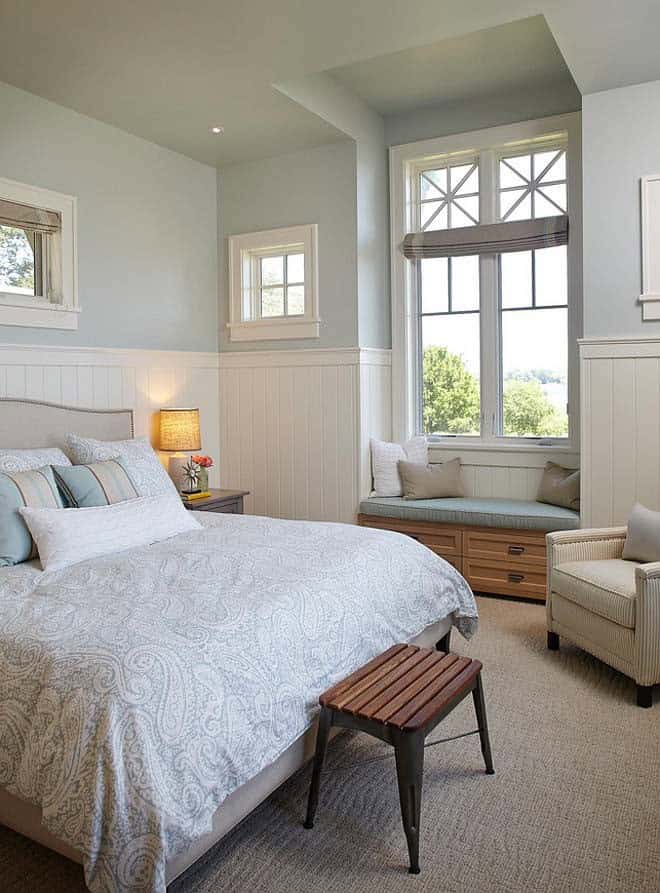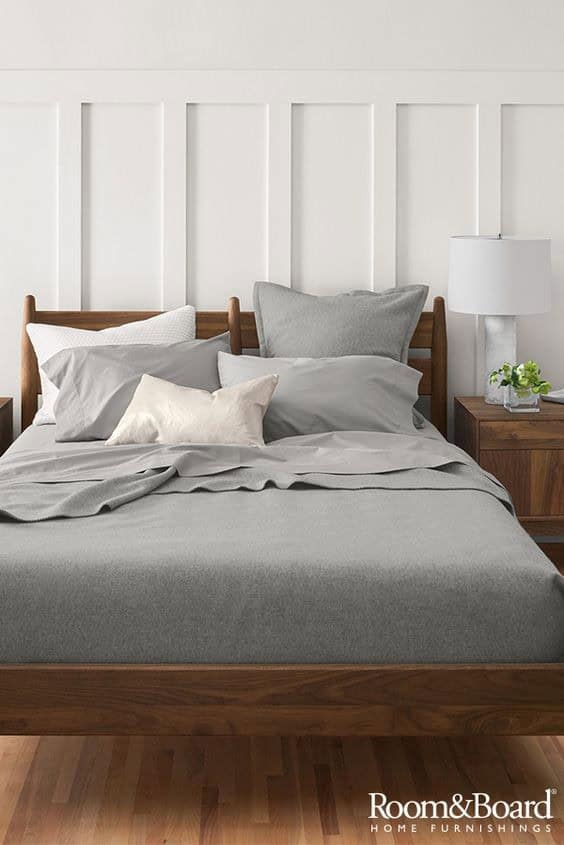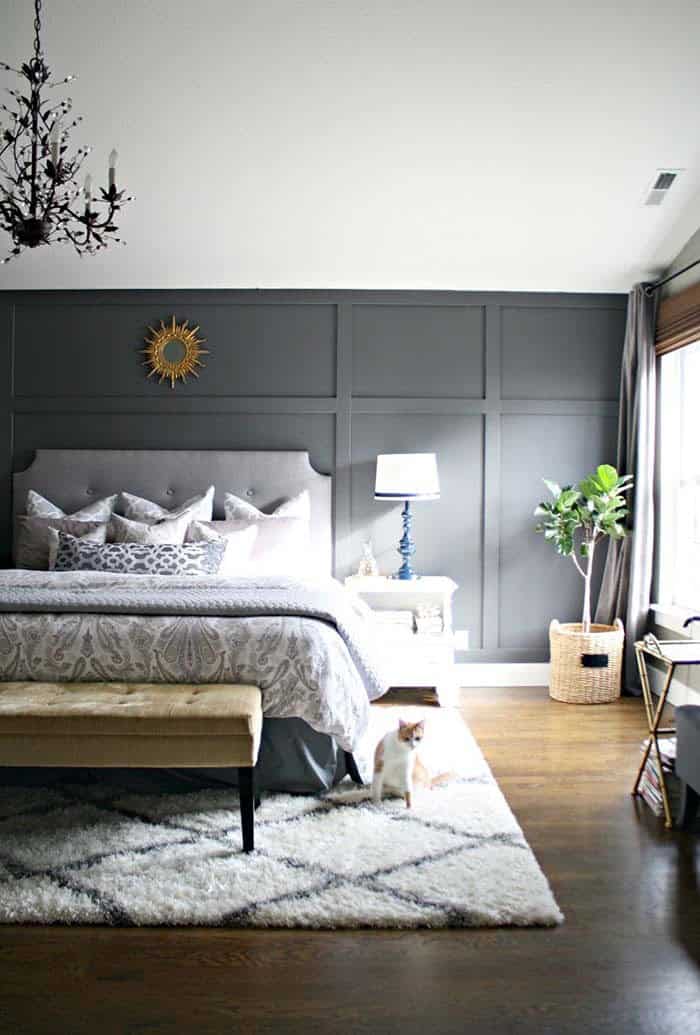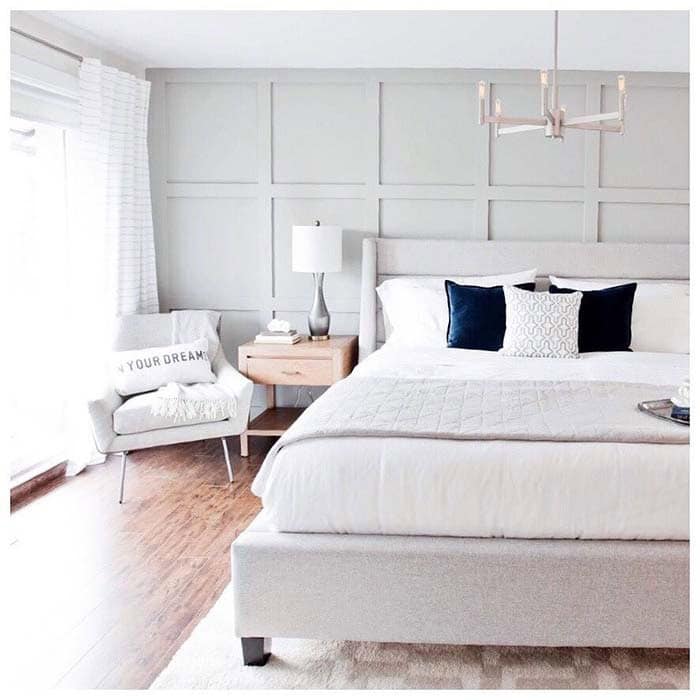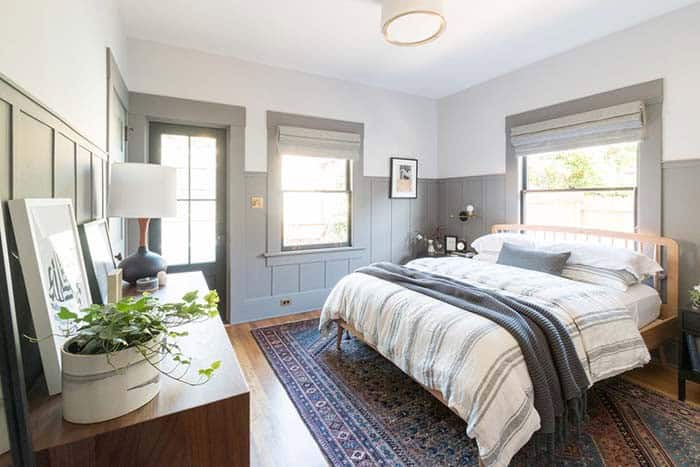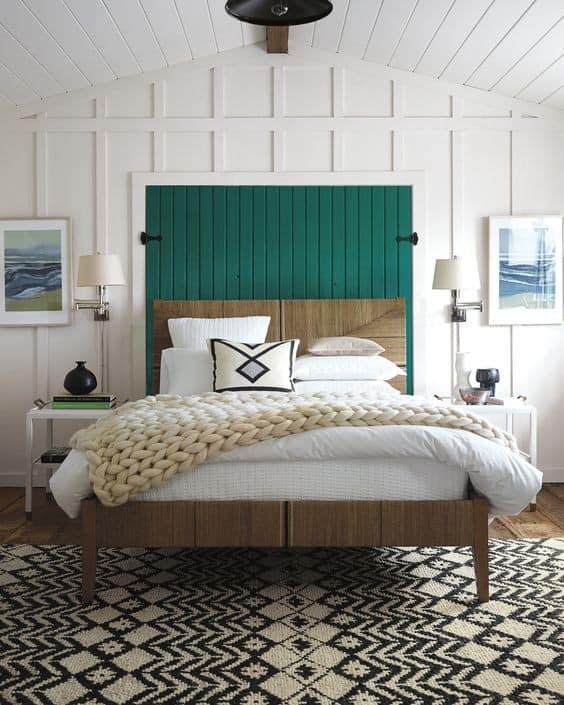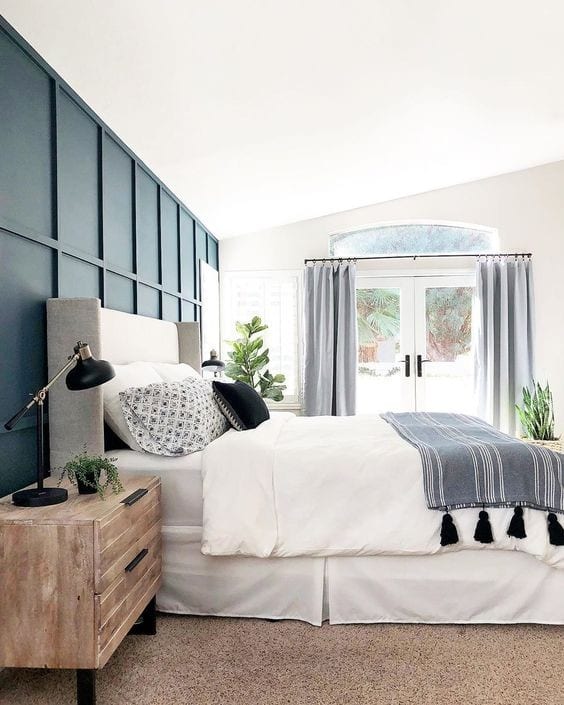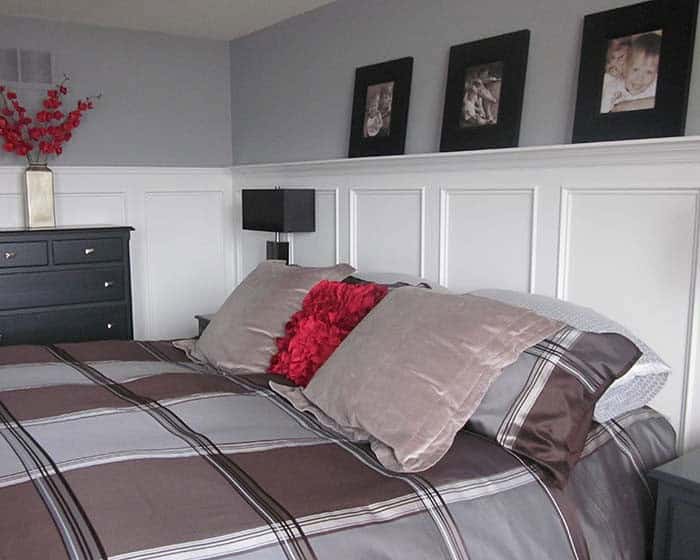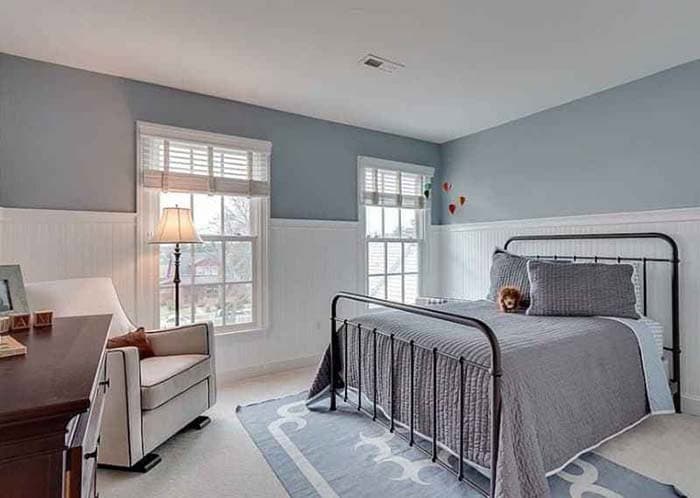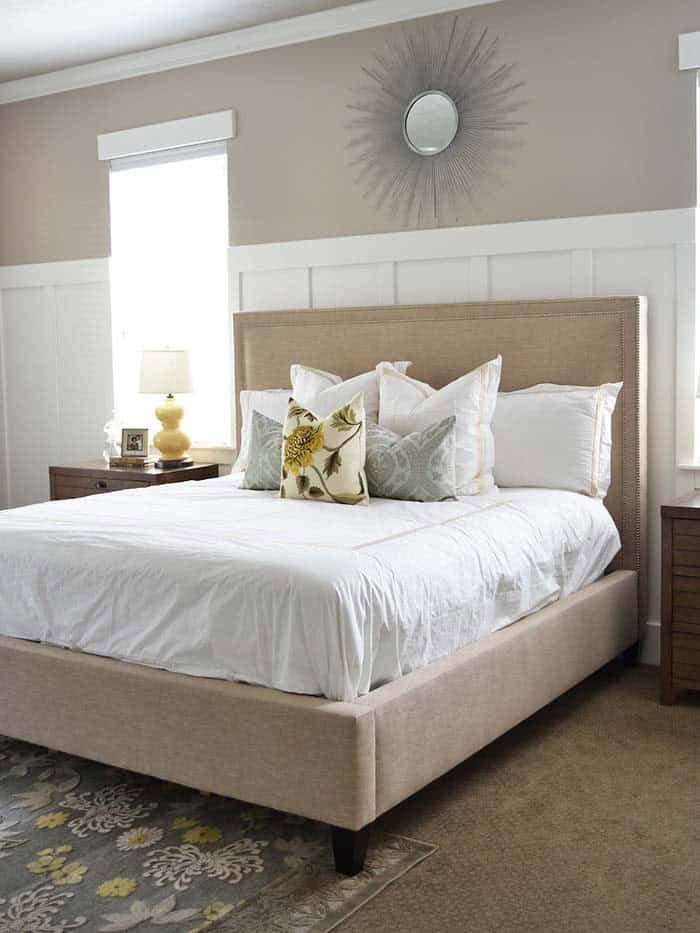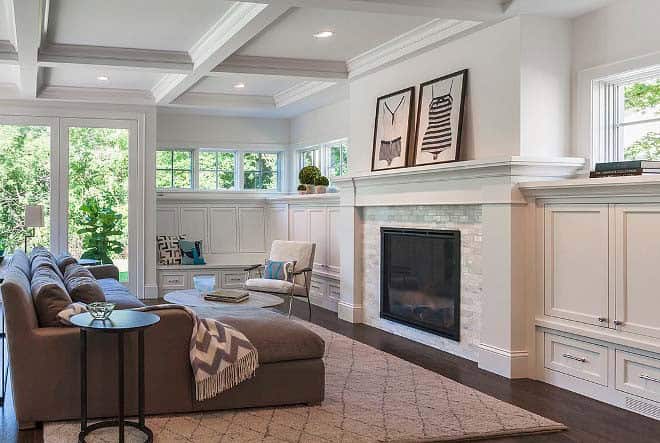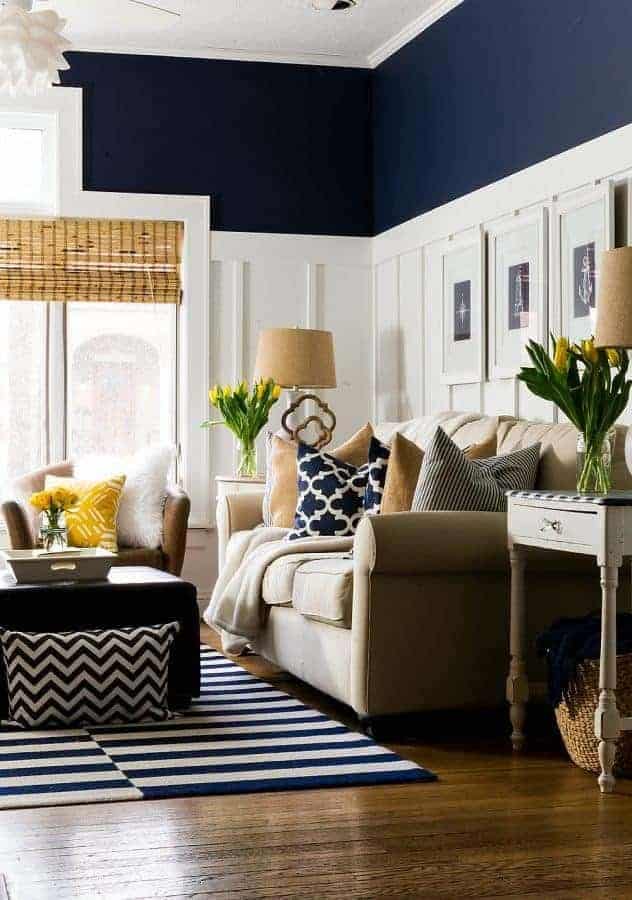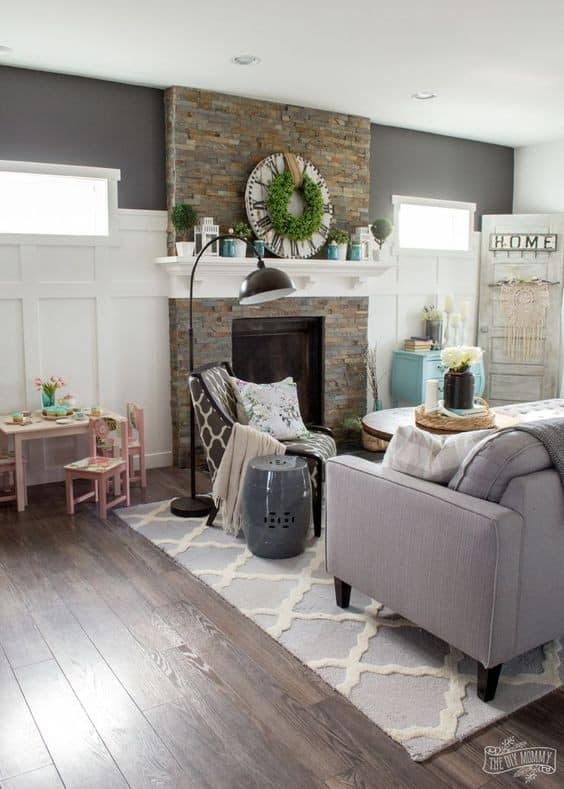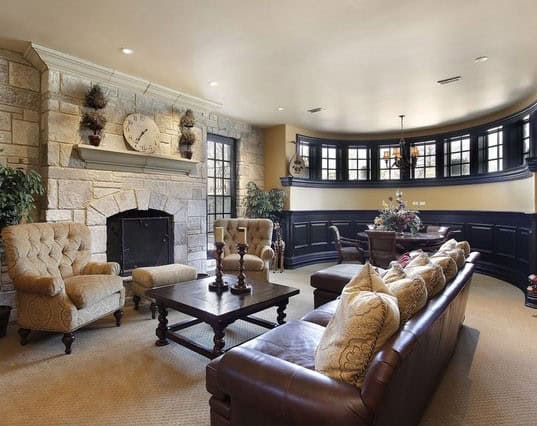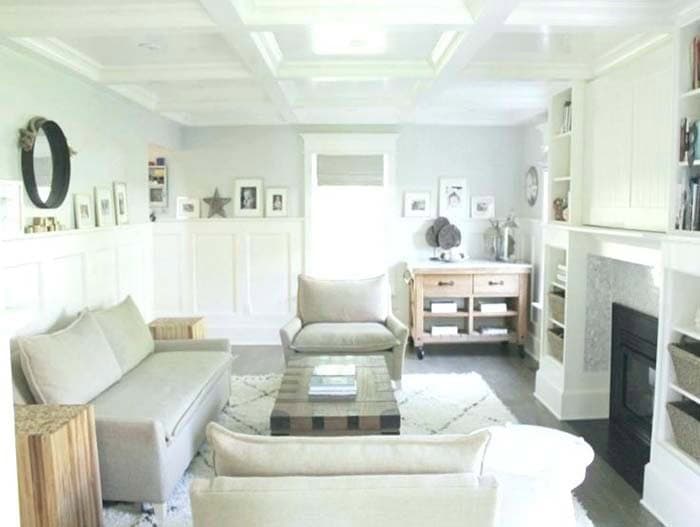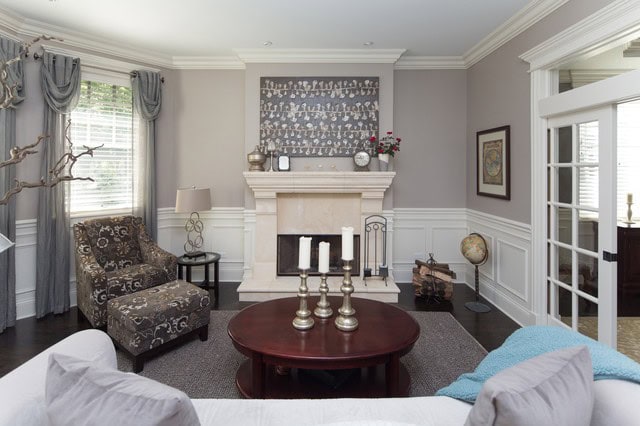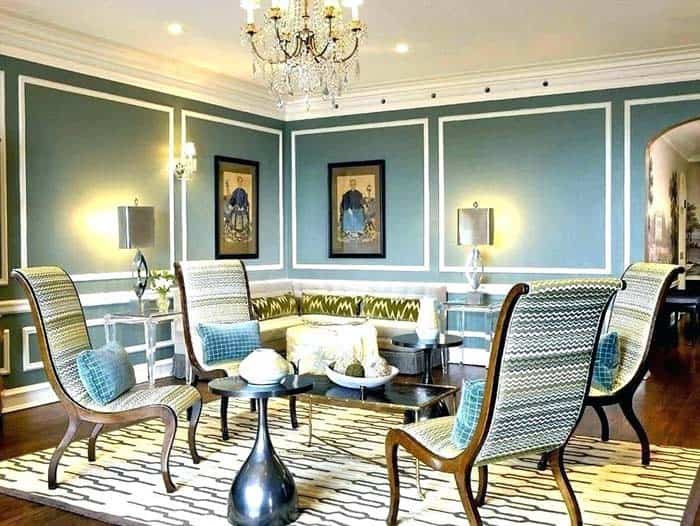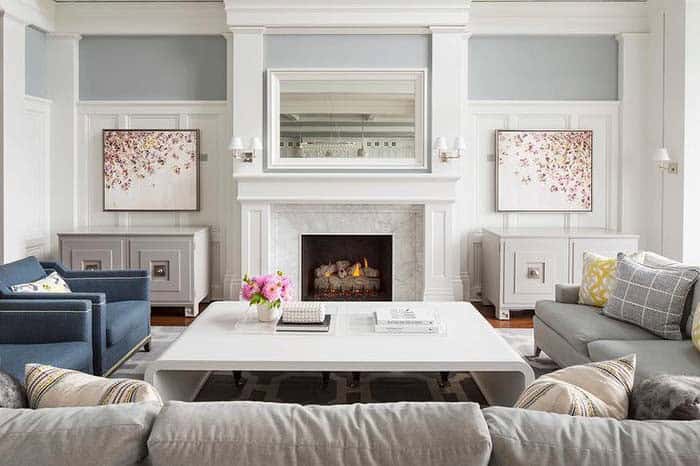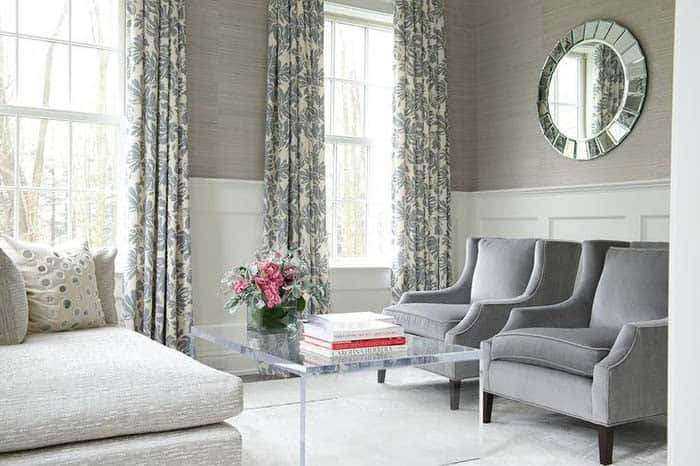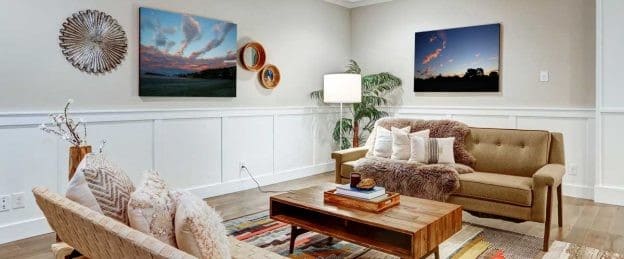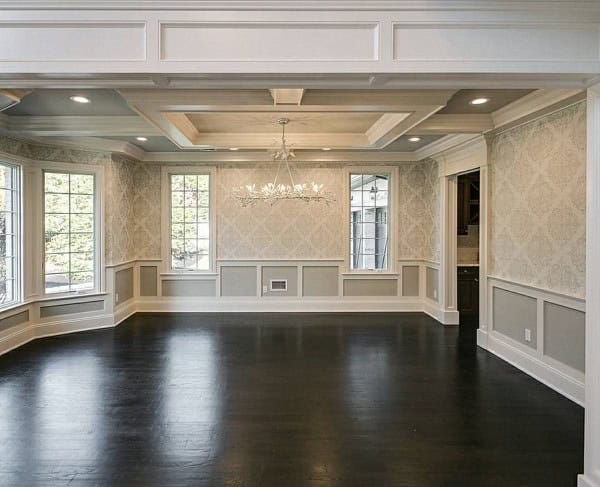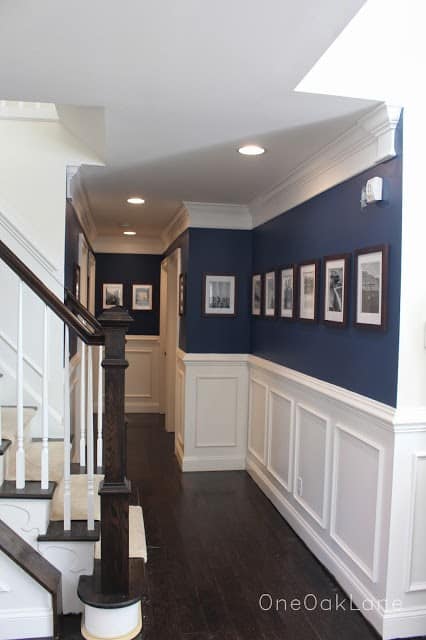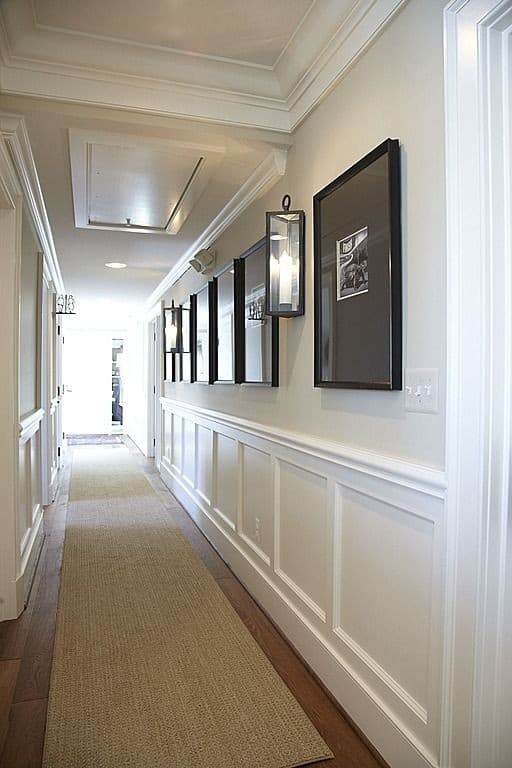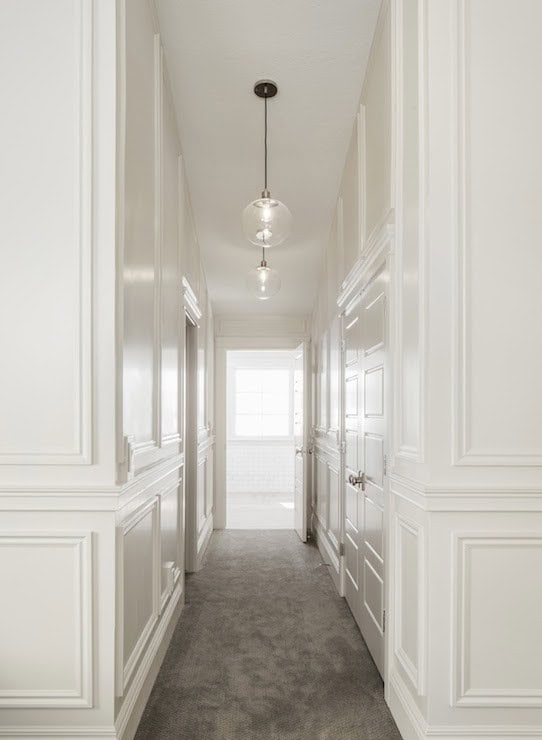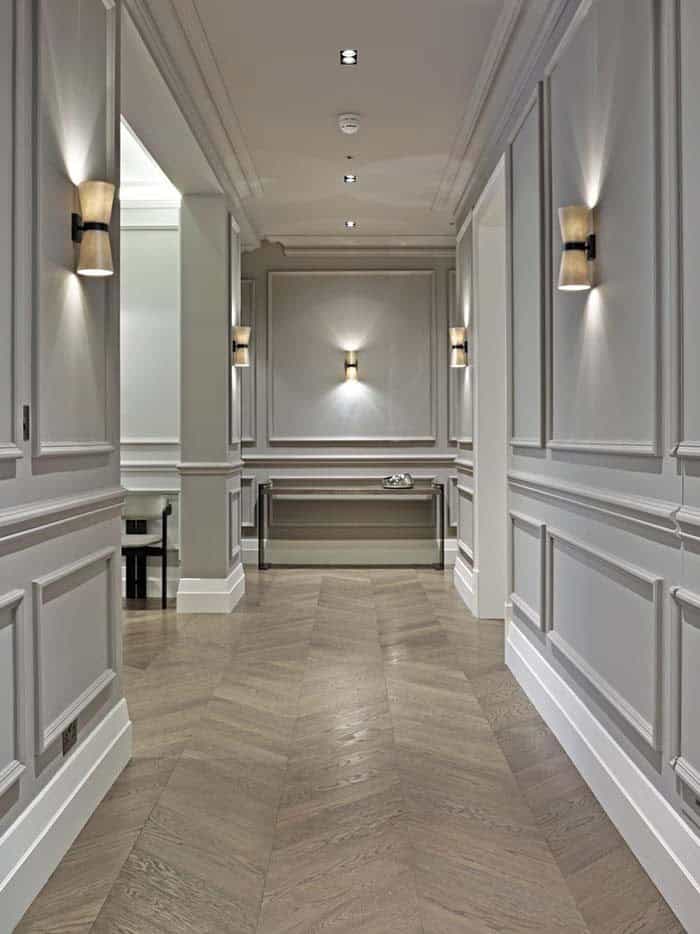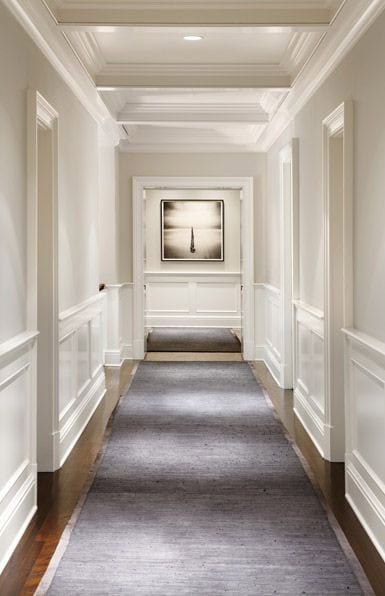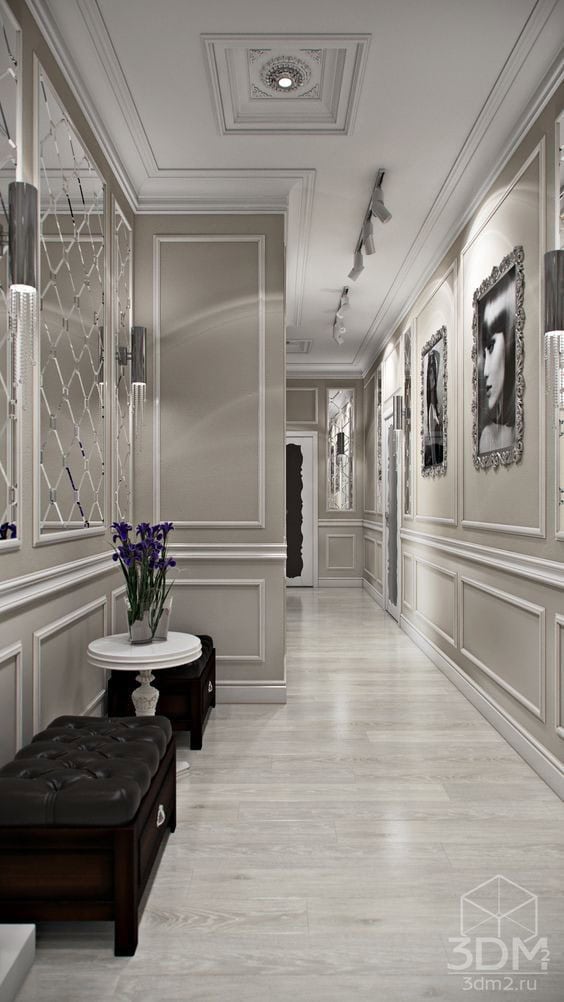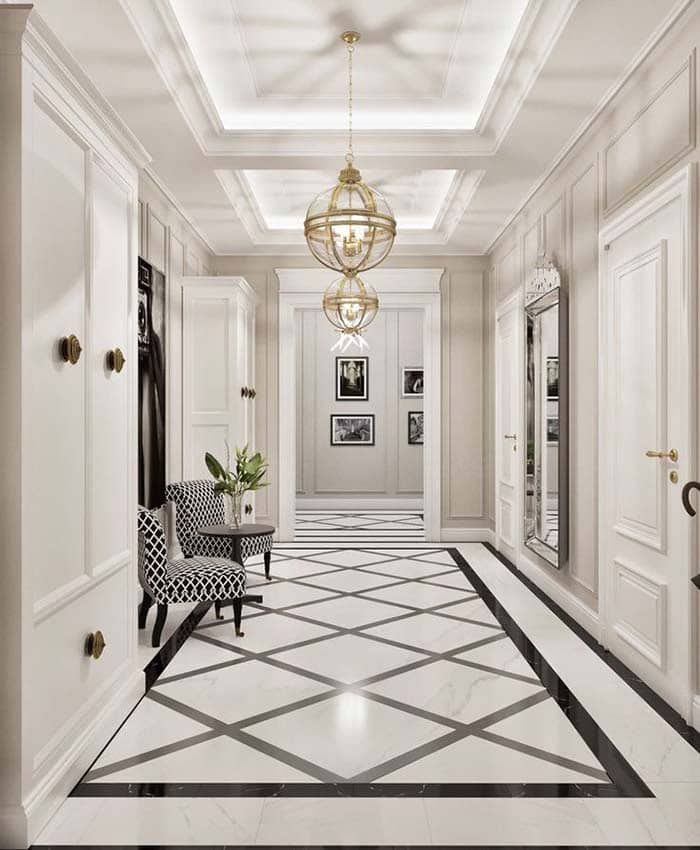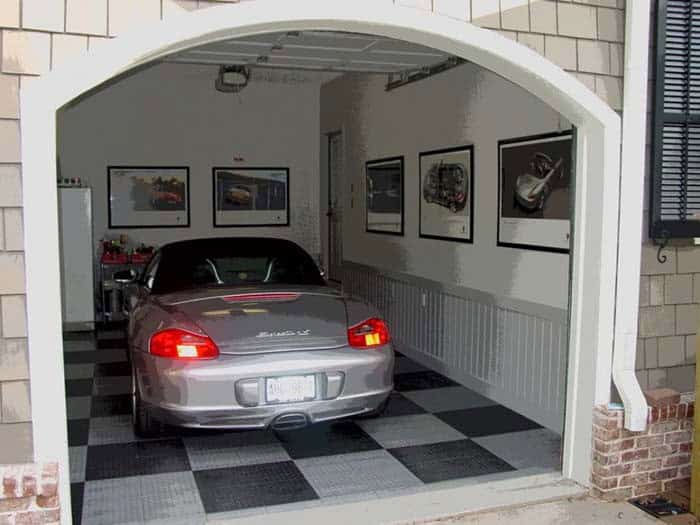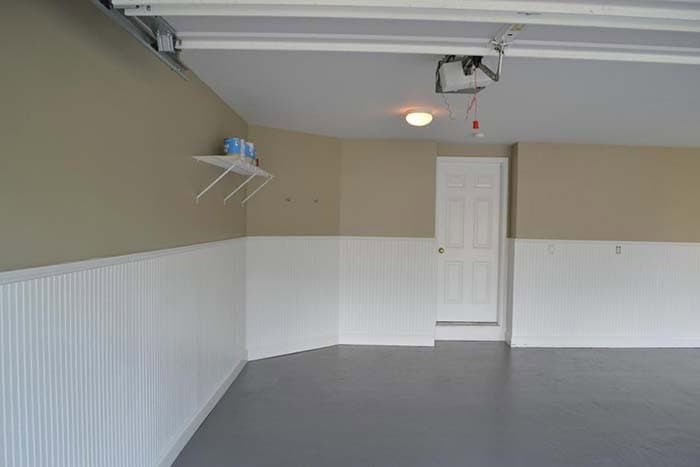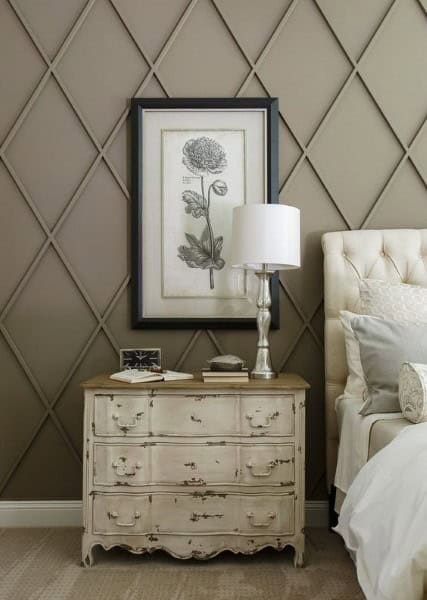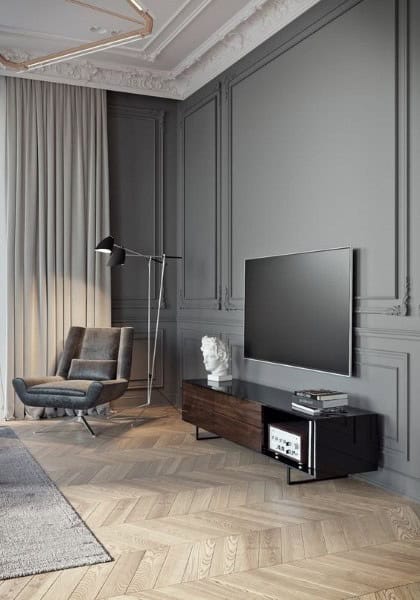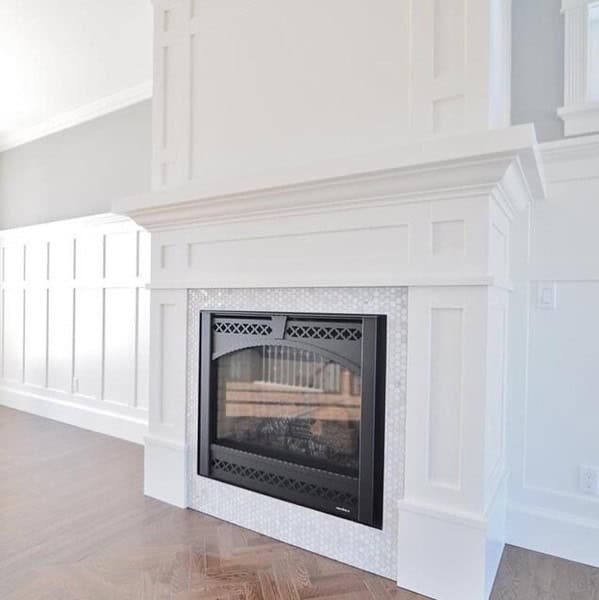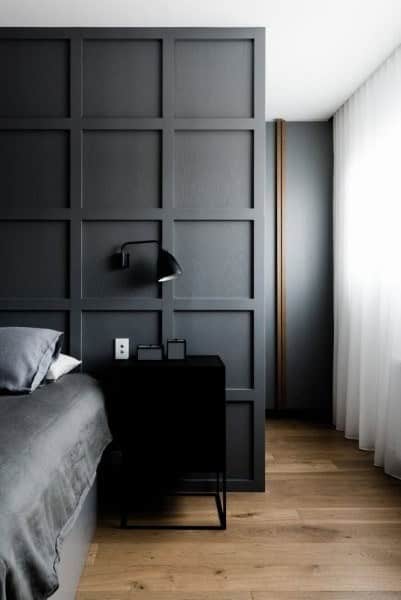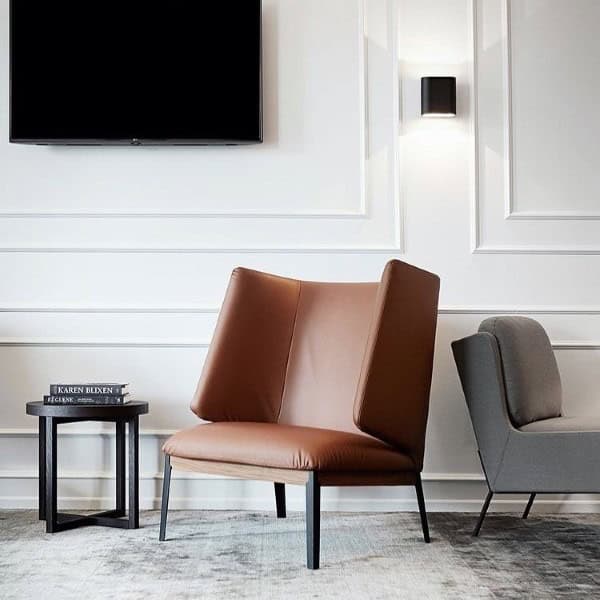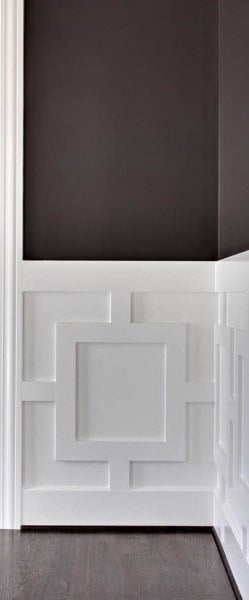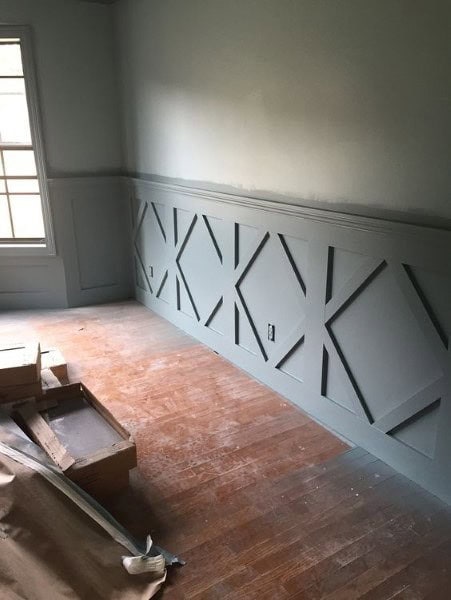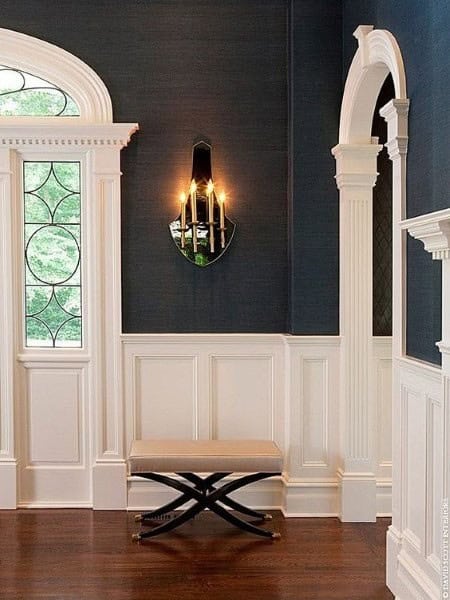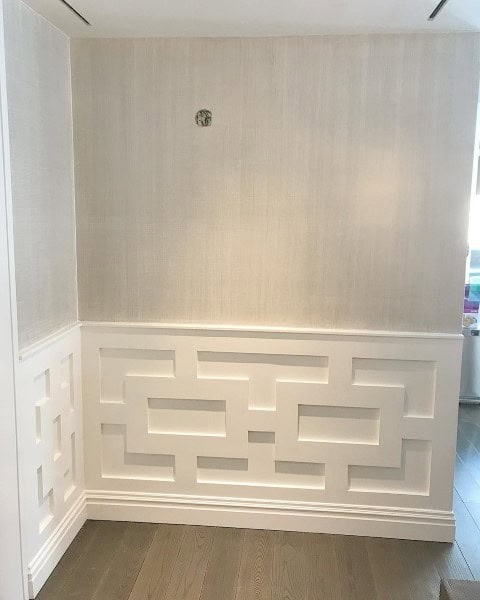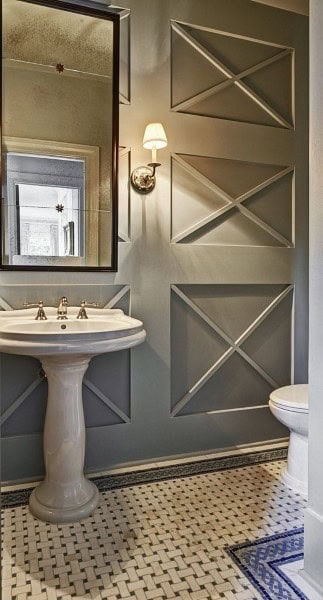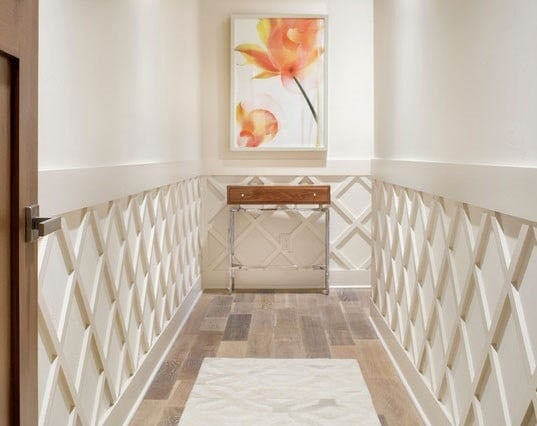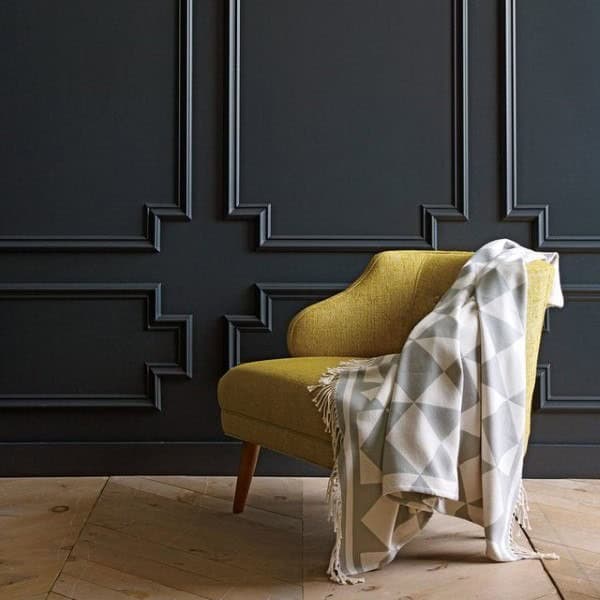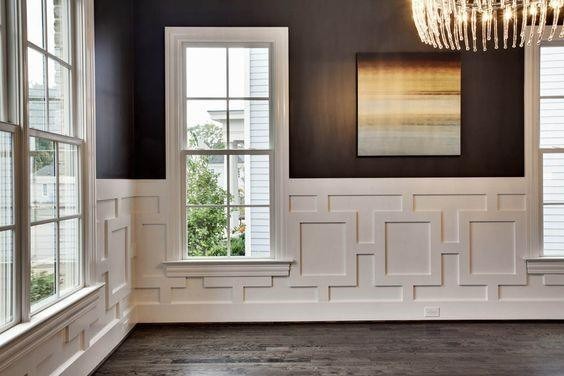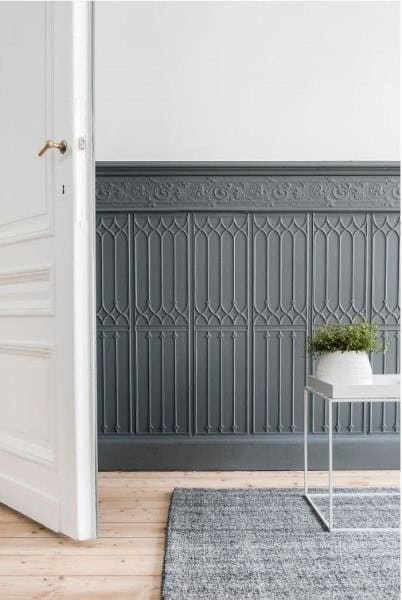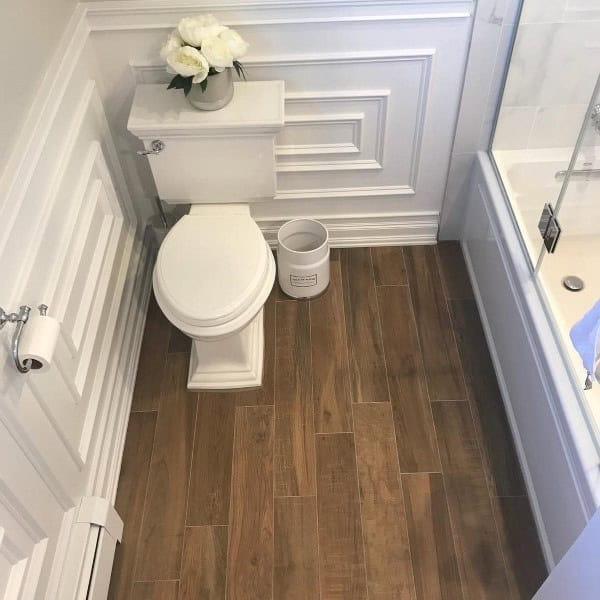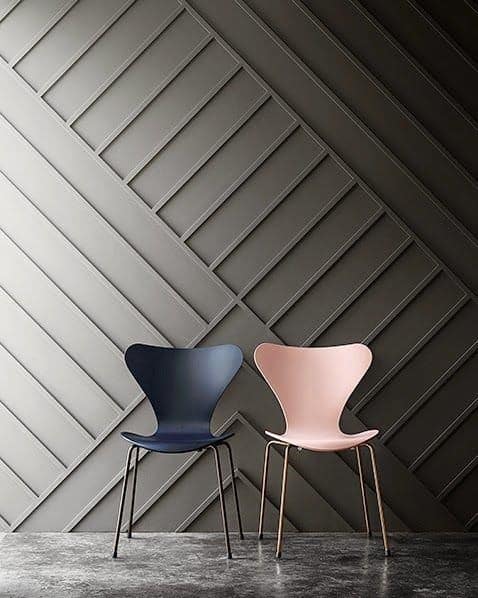Wainscoting, also known as paneling, has the power to dramatically transform a room’s aesthetic. But before you embark on this interior design project, it’s essential to weigh the pros and cons. Can you tackle wainscoting solo or will professional assistance be necessary? What’s the cost involved? To provide clarity, let’s start by defining what wainscoting is all about.
Wainscoting has evolved significantly over time, originally serving two primary purposes: insulating stone walls in ancient buildings and preventing moisture. Today, this decorative wall covering enhances interior spaces with architectural flair. With a rich history, the materials used for wainscoting have also undergone significant changes. In 18th century Europe, light oak wood was the preferred choice, whereas now, options range from various types of wood to plastic and fibreboard.
Medium-density fibreboard (MDF) has emerged as a popular paneling material due to its density and ease of workability, being a denser alternative to plywood.
Pros & Cons
Wall panels have been a staple of stylish homes for centuries. From medieval to Victorian era houses, paneling has been a timeless trend that transcends borders, with American and European colonies adopting the look as well. Adding a touch of classic elegance to any room, wall panels are more than just a decorative element – they also serve a practical purpose. By hiding imperfections, wires, or cables, panels can create a seamless visual experience.
Additionally, they provide insulation against moisture, sound, and temperature fluctuations, making them an excellent choice for maintaining a cozy atmosphere. However, paneling does require maintenance to ensure its longevity. Wooden panels, in particular, need attention to prevent rot, deformation, or moisture loss under specific conditions. Proper installation, painting, and waxing can help extend the life of your panels.
While some may view wainscoting as old-fashioned, our collection of over 100 ideas will show you that with creative design, paneling can be seamlessly integrated into a modern aesthetic.
Price and materials
The cost of wainscoting varies significantly depending on the material, craftsmanship, and design. On average, the price per square foot ranges from $10 to $30. Plywood is the most affordable option, followed closely by wood, which can vary in cost depending on the type used. Wooden wainscoting requires more expertise to install due to its tendency to contract and expand with temperature fluctuations, but it can add a touch of elegance with high-end woods like walnut or cherry.
Plastic and MDF wainscoting share a similar price point, but differ in their moisture resistance: plastic performs well in humid environments, while MDF can deteriorate when exposed to water, making it unsuitable for bathrooms. For the most premium look, investing in natural wood and having it handcrafted and professionally installed ensures deformation-free results.
Types Of Wainscoting
The world of wainscoting offers a range of options, including flat and raised panels, as well as more textured alternatives like beadboard and board and batten. While panels are often the first thing that comes to mind when thinking about wainscoted walls, there’s beauty in exploring these other styles as well.
Beadboard
Beadboard wainscoting presents a unique exception to the typical rules of interior design. This distinctive feature consists of adjacent panels installed vertically and separated by a thin bead or ridge. Each panel within the wainscoting system is comprised of a frame, known as rails and stiles, which houses a flat or raised panel.
The defining characteristic between traditional flat panel wainscoting and its raised counterpart lies not in the frame itself, but rather in the design and appearance of the internal panel.
Board and Batten
Board and batten wainscoting boasts a unique aesthetic, characterized by the strategic juxtaposition of wider boards and narrower battens. This distinctive style injects a touch of informality into traditional wainscoting, making it particularly well-suited for exterior applications, where its rustic charm can be fully appreciated.
The purpose of these battens is not merely aesthetic; they also provide crucial structural support to the overall construction, lending stability and rigidity to the design.
Wainscoting Height
The proper height for wainscoting has evolved over time, with varying approaches adopted by architects and designers. Historically, a chair’s height was considered the standard measurement, but modern practices have introduced new guidelines. Some opt to invert this ratio, covering two-thirds of the wall instead. Others rely on the golden ratio or match the window sill’s height using online calculators for precision.
Although some wainscoting installations do cover the entire wall, particularly in hallways, the 1/3 rule remains a widely accepted norm.
Simple DIY Wainscoting Method
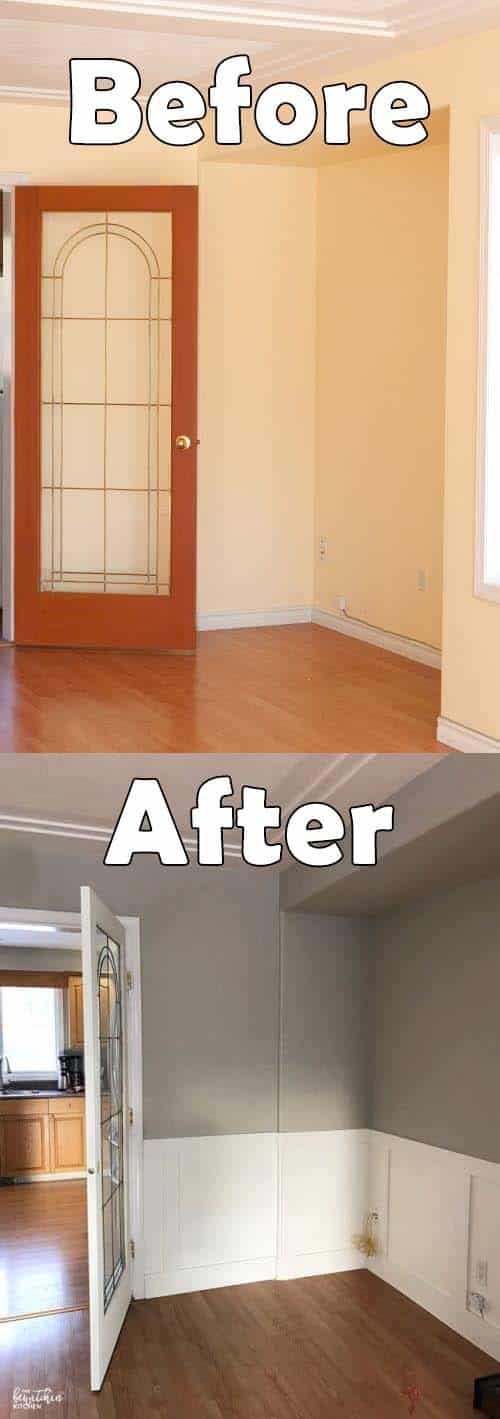
To successfully DIY wainscoting for interior walls, begin by preparing the surface. Start by thoroughly cleaning the walls with a sponge or cloth and a gentle cleaning agent to remove any dirt or grime that may be present. Next, measure out where you’d like to install the rails or battens, ensuring accurate placement from the start. Take note of any electricity sockets and make a precise cut in the board or panel to accommodate them.
For added protection and smoothness, sand and prime the boards and panels as needed. Once prepared, position the panels or boards, making any necessary adjustments to achieve a seamless look. If your chosen wainscoting style features a ledge or ‘shelf’ on top, now’s the time to add it. Finally, paint the surfaces using a brush, as the narrow width may not accommodate a roller.
For those seeking a more comprehensive guide, consider consulting the step-by-step tutorial available at thebewitchinkitchen. com for expert advice and inspiration.
Bathroom Wainscoting Ideas
Beadboard in bathrooms is a popular solution for creating a peaceful ambiance. Not only does it add a touch of sophistication to the space, but it also serves as a protective barrier against moisture and wear. This simple yet effective design element has become a staple in many modern bathrooms, allowing homeowners to achieve a harmonious blend of style and functionality.
Wainscoting is particularly common in bathrooms due to its ability to complement furniture and create a sense of continuity throughout the space. In this bathroom, for instance, the wainscot panel edges are designed to be minimalistic, which complements the overall aesthetic of the room. Additionally, the flat panels in soft blue help to tie the bathroom’s color scheme with the rest of the house. Beadboard is also an affordable and easy way to introduce color or balance the palette of a bathroom.
Furthermore, it can be used to create a sense of division in the space, as seen in this seaside-styled bathroom where the wainscoting has been cleverly used to separate the area into two distinct sections. Ultimately, the key to successfully incorporating wainscoting into your bathroom design is finding the perfect balance between form and function.
By carefully considering factors such as panel height, color scheme, and furniture placement, homeowners can create a space that is both visually appealing and functional.
Dining Room Wainscoting Ideas
Incorporating geometric shapes, paneling, and wainscoting can create a harmonious space that feels cozy and inviting. The combination of these elements allows for a sense of timelessness, reminiscent of century-old Victorian homes. When done thoughtfully, wainscoting can also draw attention to specific features in the room, such as paintings high on the wall or fireplaces. In modern designs, it’s not uncommon to see wainscoting used to add visual interest and create a sense of balance.
Whether the style is bold and modern or more subdued and classic, wainscoting can play a significant role in achieving a desired atmosphere. This is evident in the design showcased here, where the use of circles and rectangles creates an exquisite interior design that feels both unique and timeless.
Staircase Wainscoting Ideas
Wainscoting can not only add a touch of elegance to a room but also provide an additional surface to allow natural light in. When paired with bold colors, it creates a visually appealing contrast that can elevate the overall aesthetic. In some cases, wainscoting is used to create the illusion of more space by combining stripes and vertical panels. For instance, this interior designer cleverly combined these elements to create a sense of openness in a hallway.
The loose rails that cover the edge of the wainscot also contribute to its pleasing visual effect. Moreover, many homeowners and designers opt to let the paneling complement rather than compete with the surrounding colors. This approach works particularly well when a colorful palette is chosen for the rooms. In some instances, wainscoting takes center stage, as seen in this example where the hardwood floor is given prominence.
The combination of patterns on this staircase may seem busy at first glance, but it ultimately creates an aesthetically pleasing effect. Similarly, the wainscoting in another home harmonizes with old-world furniture and imagery to create a cohesive look. In some cases, paneling serves as a clear border between spaces, as seen when two floors are connected. A modern geometric design can also complement the sharp look of carpet and furniture downstairs, making for a harmonious visual effect.
Lastly, wainscoting can seamlessly integrate with the railing to complete the overall visual feel, as seen in this staircase example.
Kitchen Wainscoting Ideas
In contrast to wainscoting’s limited use in kitchens, kitchen islands offer a unique opportunity for paneling. When done correctly, it can create a stunning visual effect. The taller wainscoting adds a touch of delicacy to the entire space, drawing attention to even the smallest details such as chairs and kitchen sinks situated within the island. The paneling also plays a crucial role in protecting the walls from damage or discoloration, keeping them looking pristine.
In this particular design, the wainscoting serves not to create visual separation but rather to blur the lines between wall and furniture, allowing the wooden floor to take center stage as the true focal point of the room.
Bedroom Wainscoting Ideas
The wainscoting in this room is expertly designed to complement the stunning large window, creating a cozy reading nook. The tall panels don’t quite cover the entire wall, adding visual interest and depth to the space. Elsewhere, mixed-sized flat panels create a tidy yet unobtrusive look, while two lines of panels add a touch of elegance to the all-white relaxation corner. The grey color scheme cleverly balances out the huge windows, resulting in a bright and relaxing atmosphere.
In the master bedroom, wainscoting and green paneling create a charming barn door-like effect, adding an interesting accent to the space. A unique combination sees wainscoting covering only one wall of a room, creating a striking visual focal point. For those who prefer a traditional yet simple style, flat panels are an excellent choice. Meanwhile, beadboards add a delightful sense of texture and character to a room.
Interestingly, the windowsills match the height of the wainscot in this well-designed bedroom, creating a cohesive look.
Living Room Wainscoting Ideas
Elevation Homes’ interior design highlights a cozy reading space, courtesy of high windows and plush pillows. In contrast, some architects believe that wainscoting height should be directly tied to the windowsill’s height. Meanwhile, white wainscot creates a calming ambiance in this living room. Notably, higher paneling can make it appear as though the roof is higher up, thereby creating more space. However, curved wainscoting ideas may not be as common due to their increased complexity.
The palette in this room would not have worked without the wainscot’s added depth. Traditional rooms with wainscoting often feature accent pieces like mahogany tables. For instance, an old-world living room can seamlessly integrate a modern touch through wainscoting and wall design. In some cases, it may be difficult to distinguish between wainscoting and walls in a single space. A perfect example of this is when curtains match both the paneling and walls, creating harmony.
Furthermore, lighter colors can contribute to a fresh and airy feel, as seen in this particular room. It’s worth noting that some wainscoting designs go lower than one-third of the wall, offering an uncommon visual contrast.
Hallway Wainscoting Ideas
When it comes to designing a hallway, the first thing that often comes to mind is the classic flat panel. But did you know that wainscoting can be just as effective in adding character to an otherwise empty space? In fact, a well-designed wainscot can completely transform the look and feel of your hallway. And when it comes to choosing the right size for your hallway, it’s not just about the width – it’s also about how you deal with small and large spaces.
Don’t be afraid to go bold and choose an all-white interior for your hallway – it will never go out of style! The panels can add a sense of texture to plain flat surfaces, even if they don’t bring in additional colors. You can also combine different sets of panels to cover the whole height of your hallway walls, creating a cohesive look that’s both modern and timeless.
And let’s not forget about long lean hallways – wainscots are almost a must-have for these spaces, as they help create a sense of depth and visual interest. Whether you’re going for a high-fashion feel in your grayscale lobby or adding a little extra something to your black and white design, the right wainscot can make all the difference.
Garage Wainscoting Ideas
While garages are often notorious for their lack of tidiness, this particular space makes a concerted effort to incorporate aesthetic elements, thanks in large part to the incorporation of wainscoting. One of the primary benefits of this design choice is that it creates additional garage storage space, which is always a welcome addition. Furthermore, the beadboard not only generates more room for storage but also serves as a protective barrier against potential scratches or scuffs on the walls.
Creative Wainscoting Styles
Geometry doesn’t have to be limited to rectangles alone. In fact, vertical and horizontal panels can harmoniously coexist when there’s sufficient space. A fireplace, for instance, is more than just a piece of furniture – it’s an opportunity to showcase a stunning design. The dark colors used here add a sleek and sophisticated ambiance. Similarly, large panels that cover entire walls and feature smooth surfaces can reflect light back into the room, creating a warm and inviting atmosphere.
Creative wainscoting ideas can be a conversation starter in your home, as they offer a unique touch that sets you apart from others. The architects behind these designs clearly prioritize aesthetics over functionality. The arches found in this house are a dead giveaway that its owner has a soft spot for classical style. While the wainscoting may not necessarily stand out with bold colors, its unique shapes can be just as striking.
In this bathroom, for example, creative patterns add a touch of elegance. Raised battens can transform a space and infuse it with energy. A clever project that seamlessly hides the joints where separate panels meet can also make for an impressive design. Those who crave something different for their homes will appreciate these styles of wainscoting.
While detailed, carefully crafted designs may require extra effort and resources, they can ultimately increase your home’s value and leave a lasting impression. By incorporating geometrical elements in smaller rooms, you can create the illusion of busier spaces while still maintaining style.
Wainscoting Paint Ideas
When it comes to painting wainscoting and paneling, white or its subtle variations are often the go-to choices. Snow white, cream white, and muted white are all popular options that can complement various interior design styles. However, you may also consider lighter shades like light gray, light blue, or beige if you plan to incorporate them seamlessly into your overall scheme – including wall colors, furniture, and ceiling designs. In well-lit areas, darker hues can work beautifully too.
Dark gray, brown, navy blue, or even black can create a dramatic and sophisticated look. Nevertheless, it’s crucial to select the perfect paint color for your wainscoted walls from the outset to avoid costly mistakes later on in the project.
Conclusion:
While wainscoting may not be an absolute necessity to create a livable space, it can serve as a means to infuse a room with elegance or a sense of tradition. By incorporating this design element, you can add a touch of sophistication and visual interest to what would otherwise be a blank canvas. With the examples presented in this article, I hope readers have gained valuable insights and inspiration to inform their own home transformation projects.
